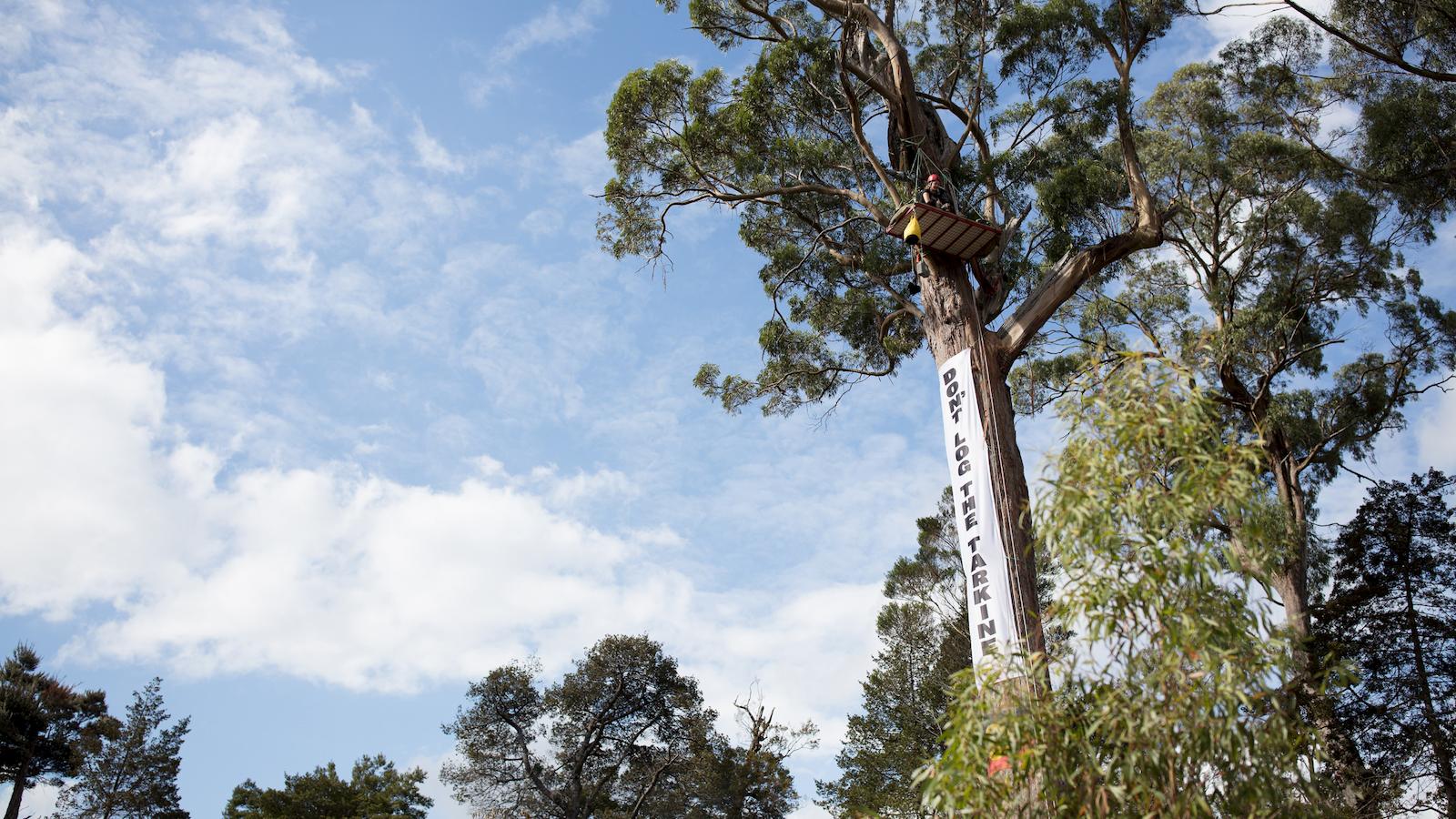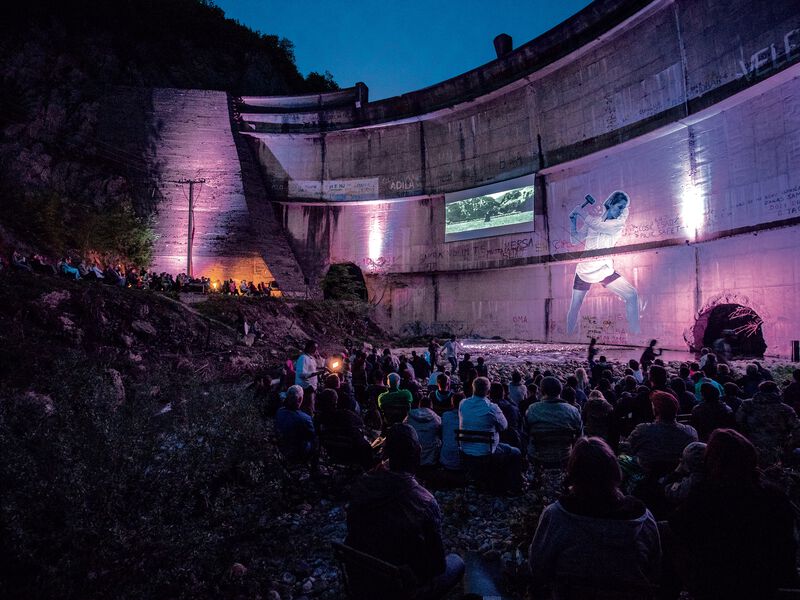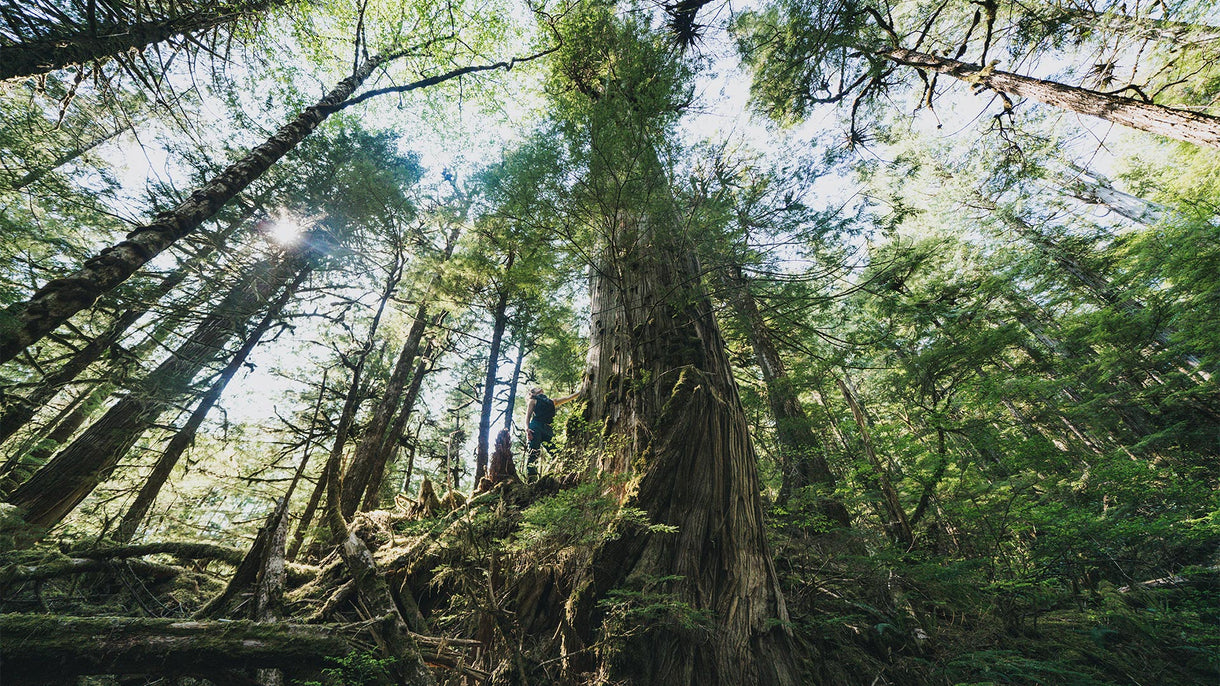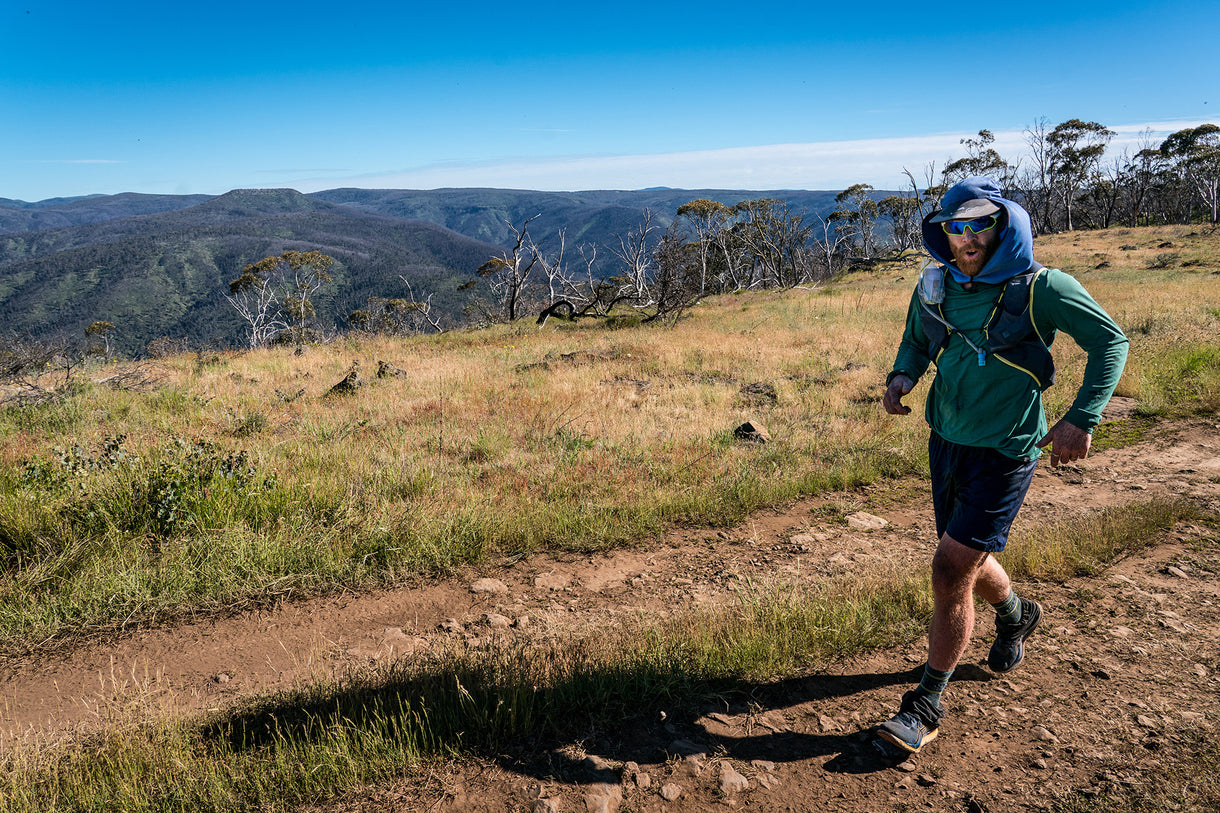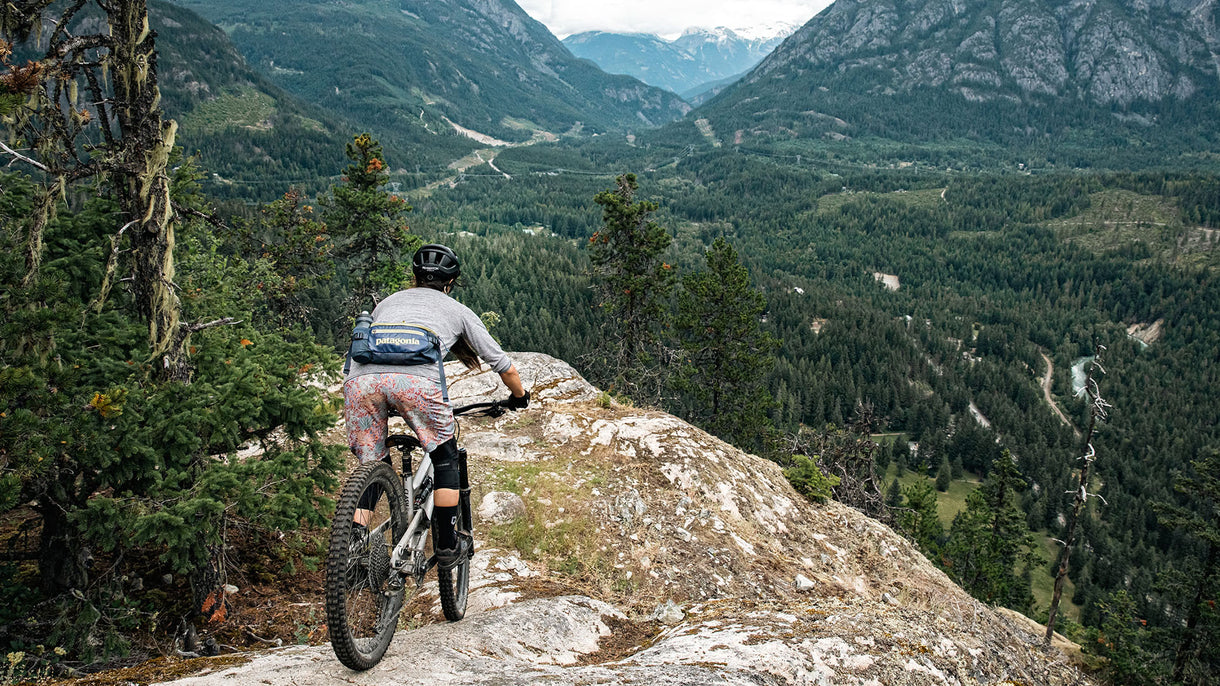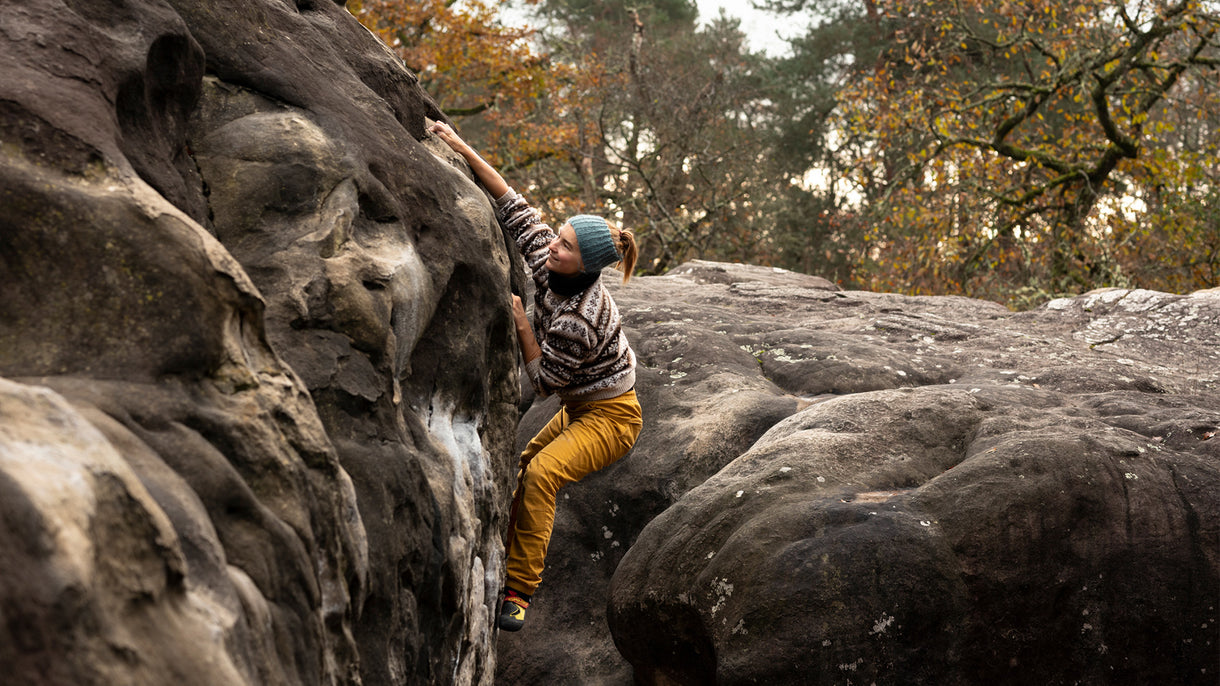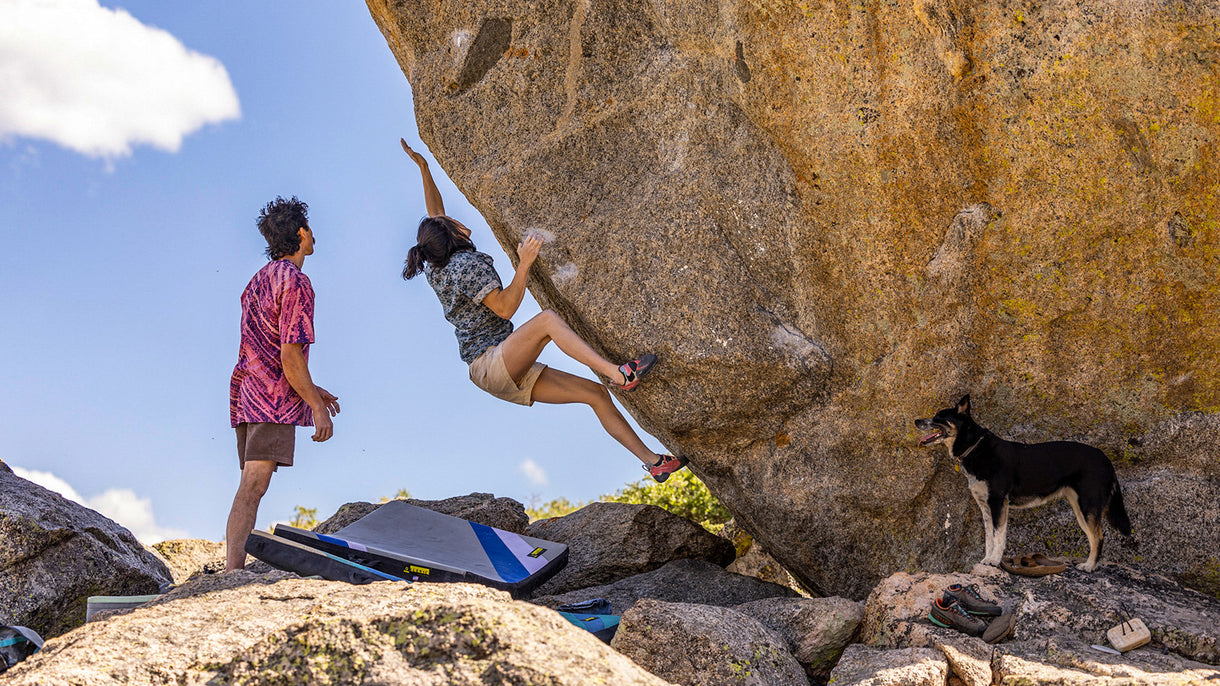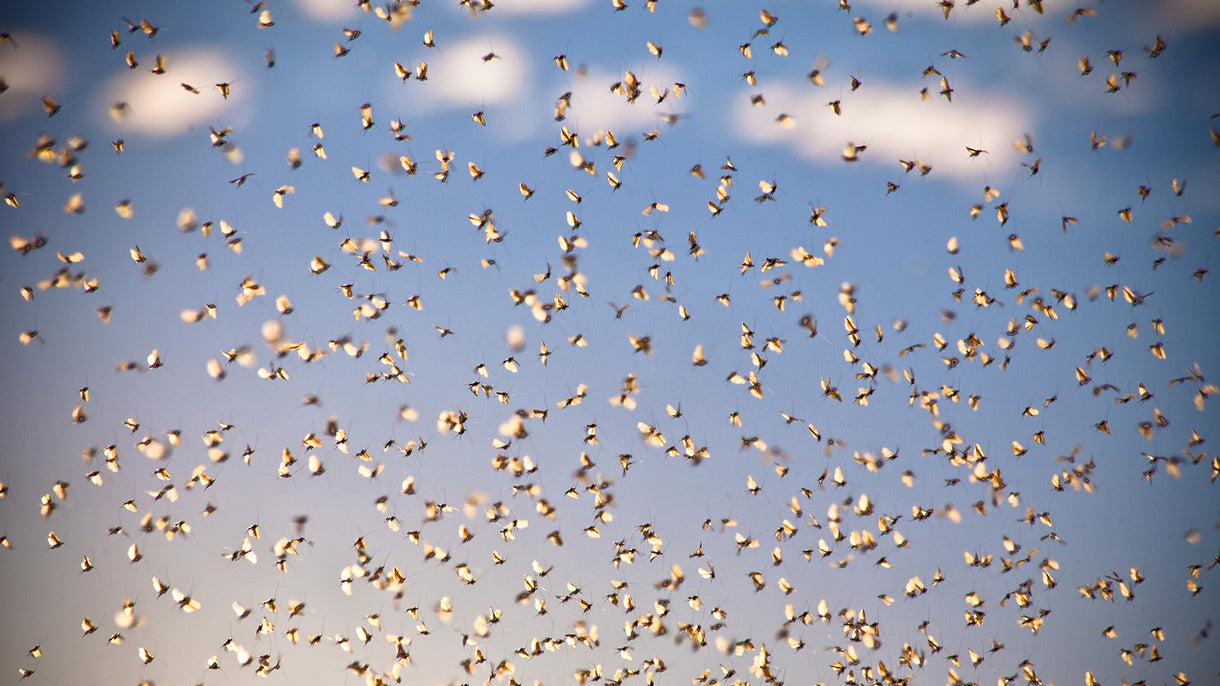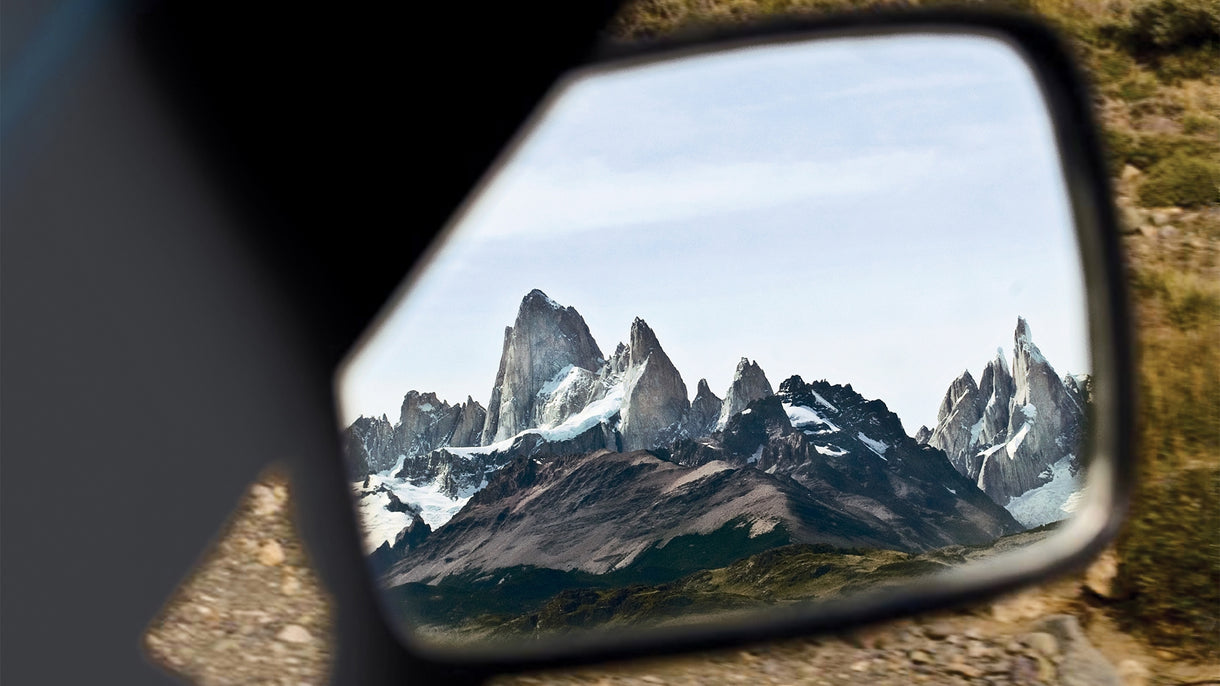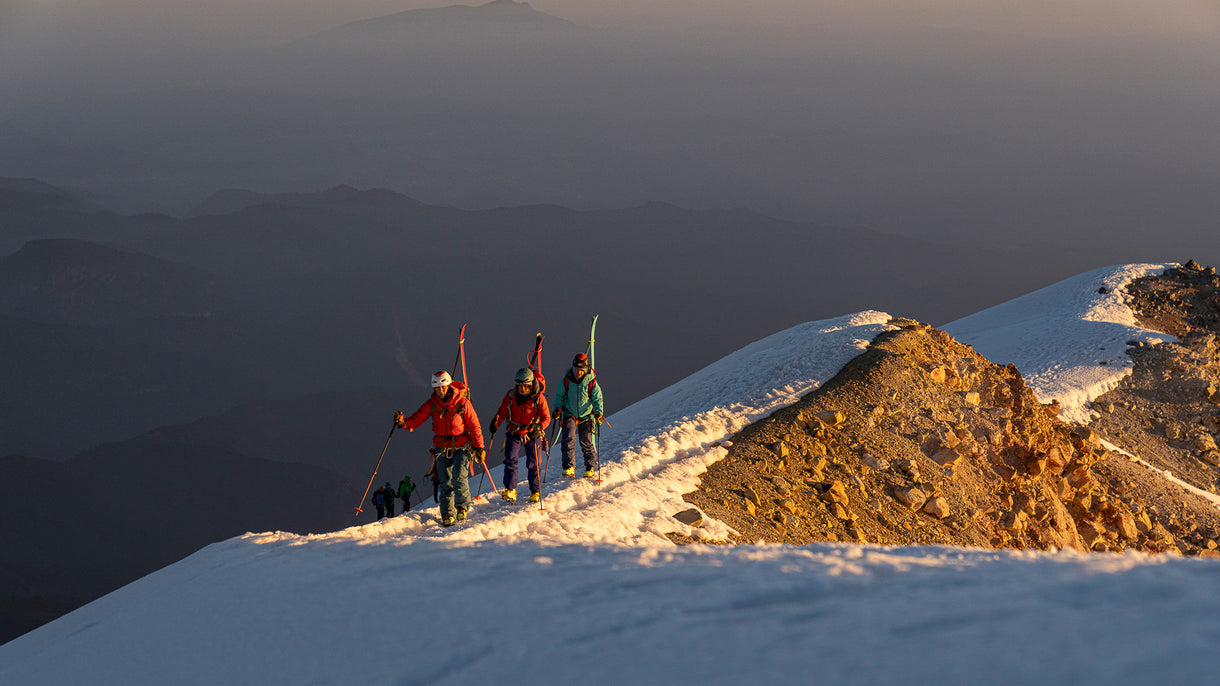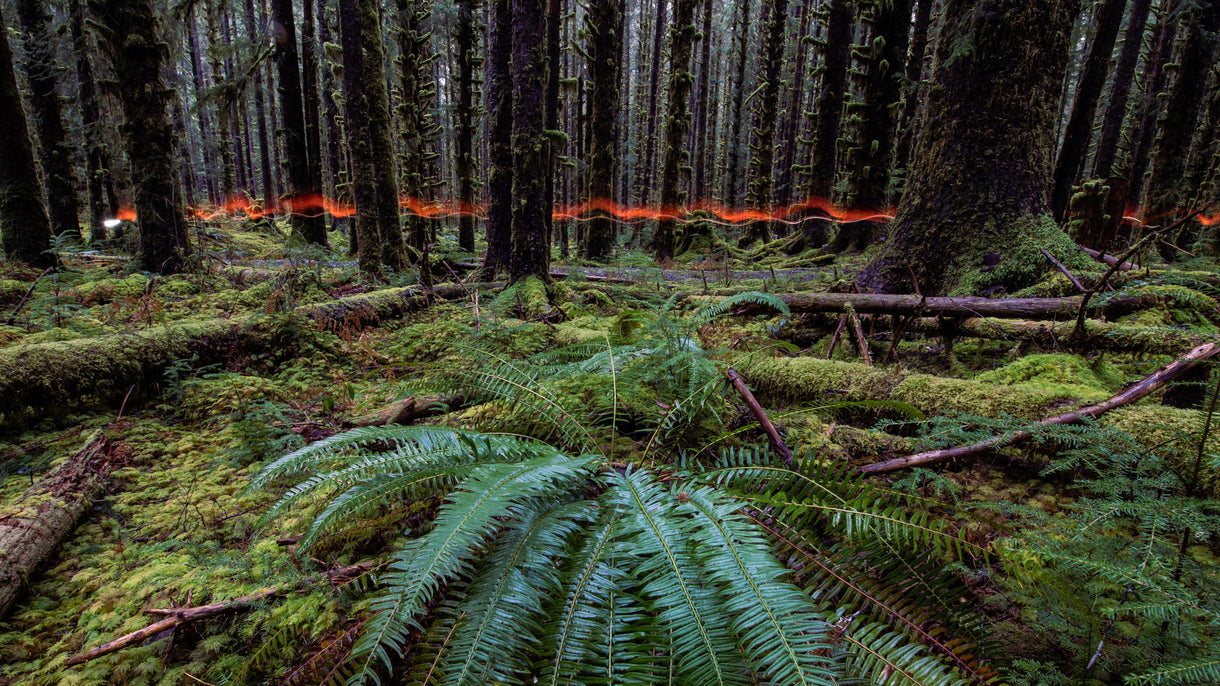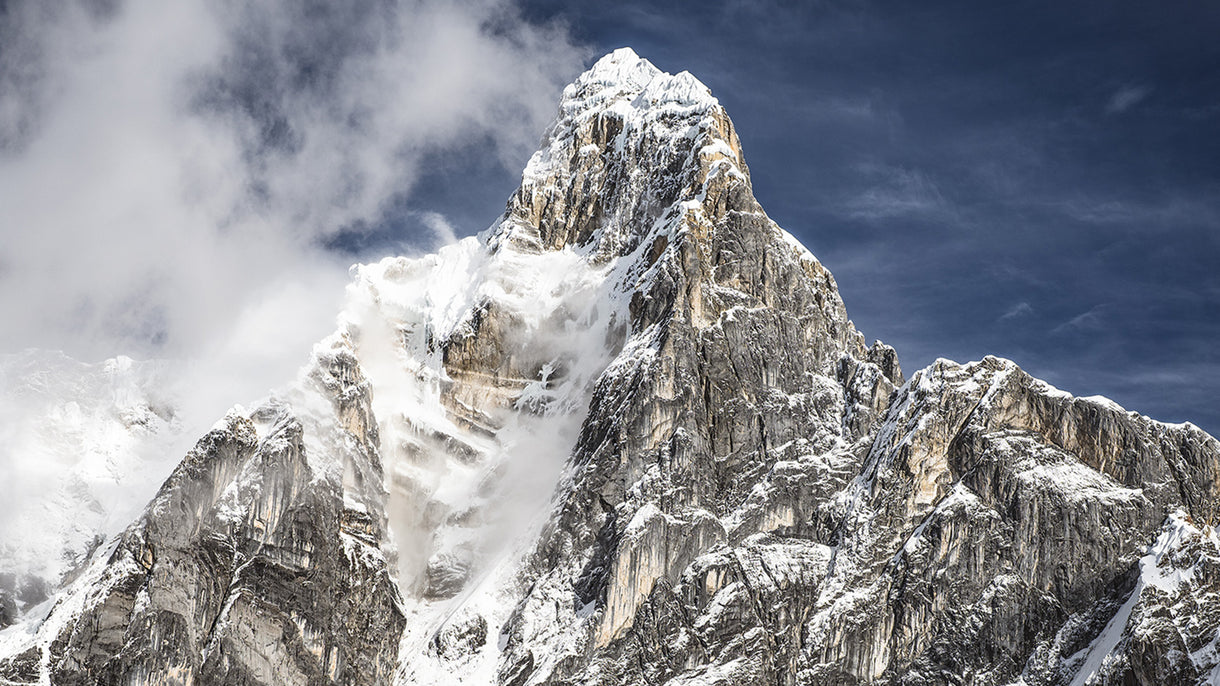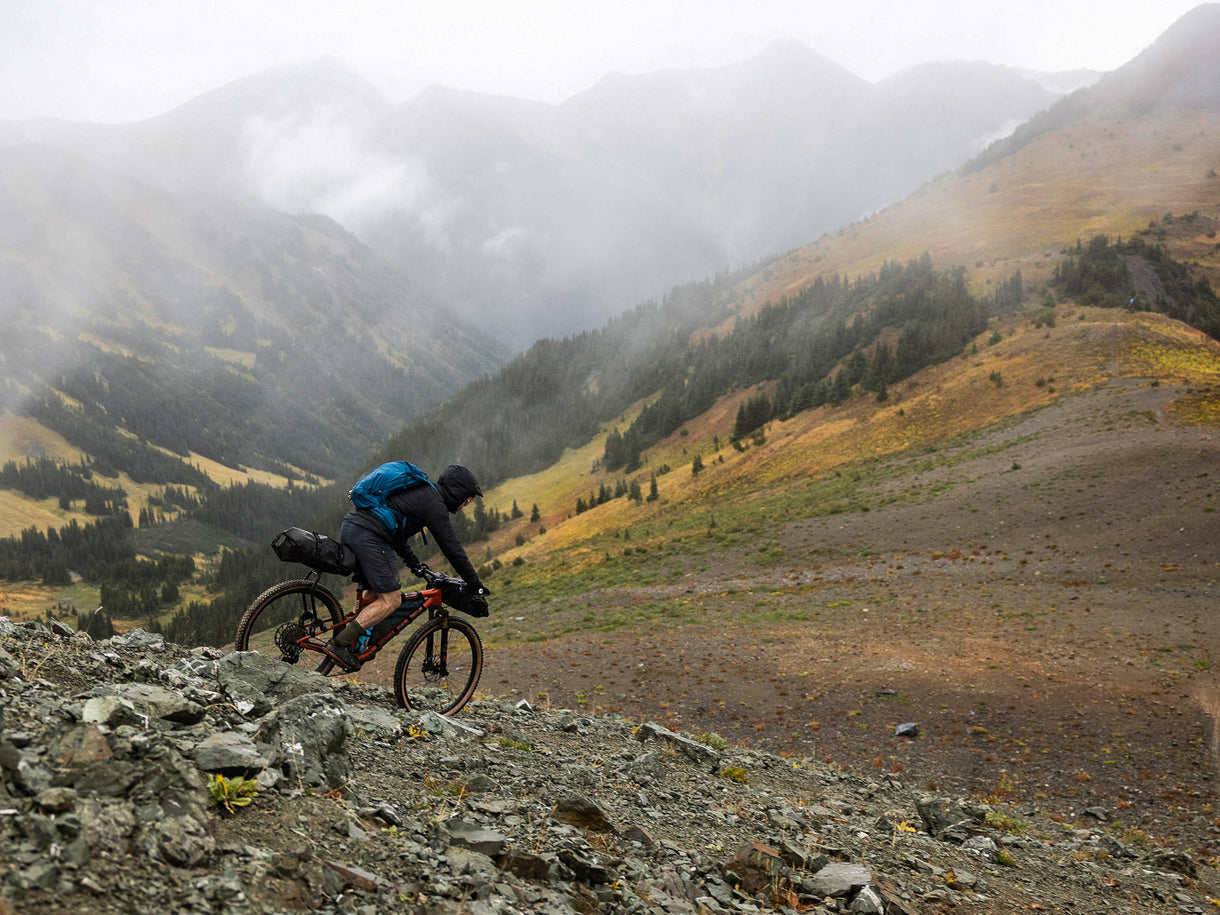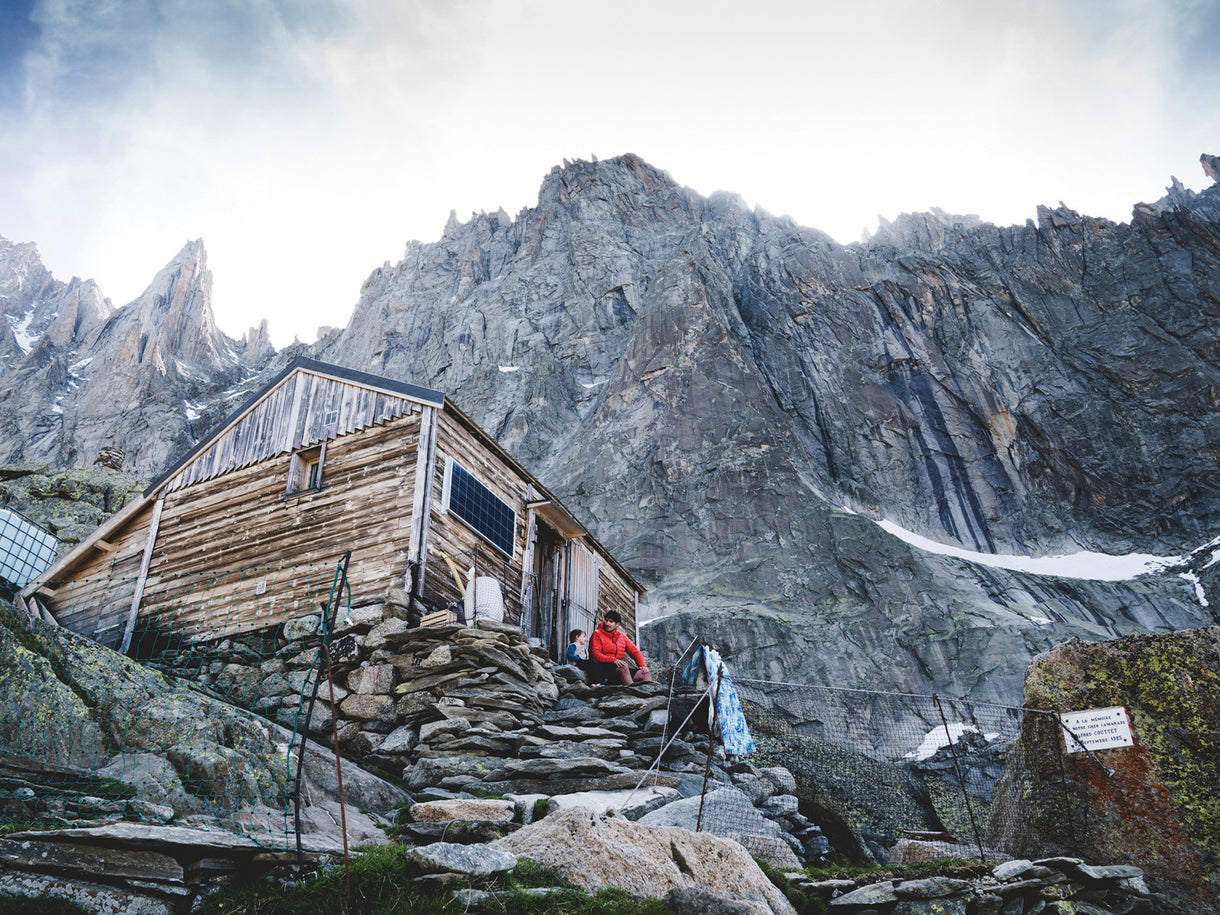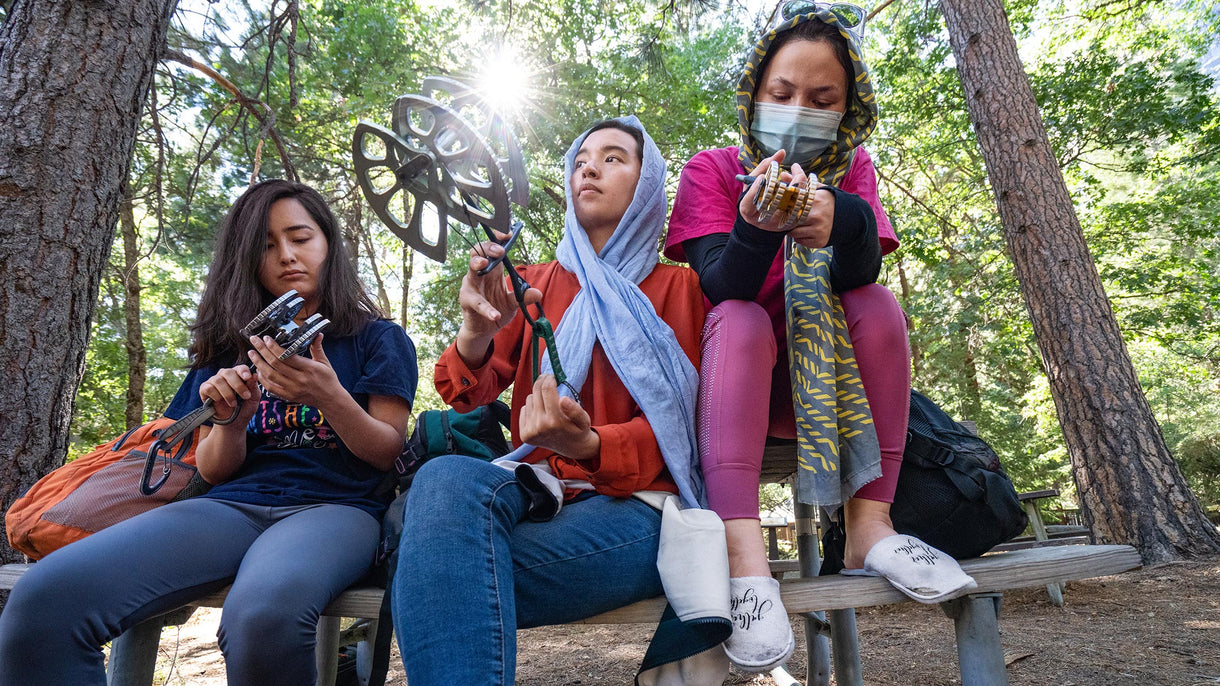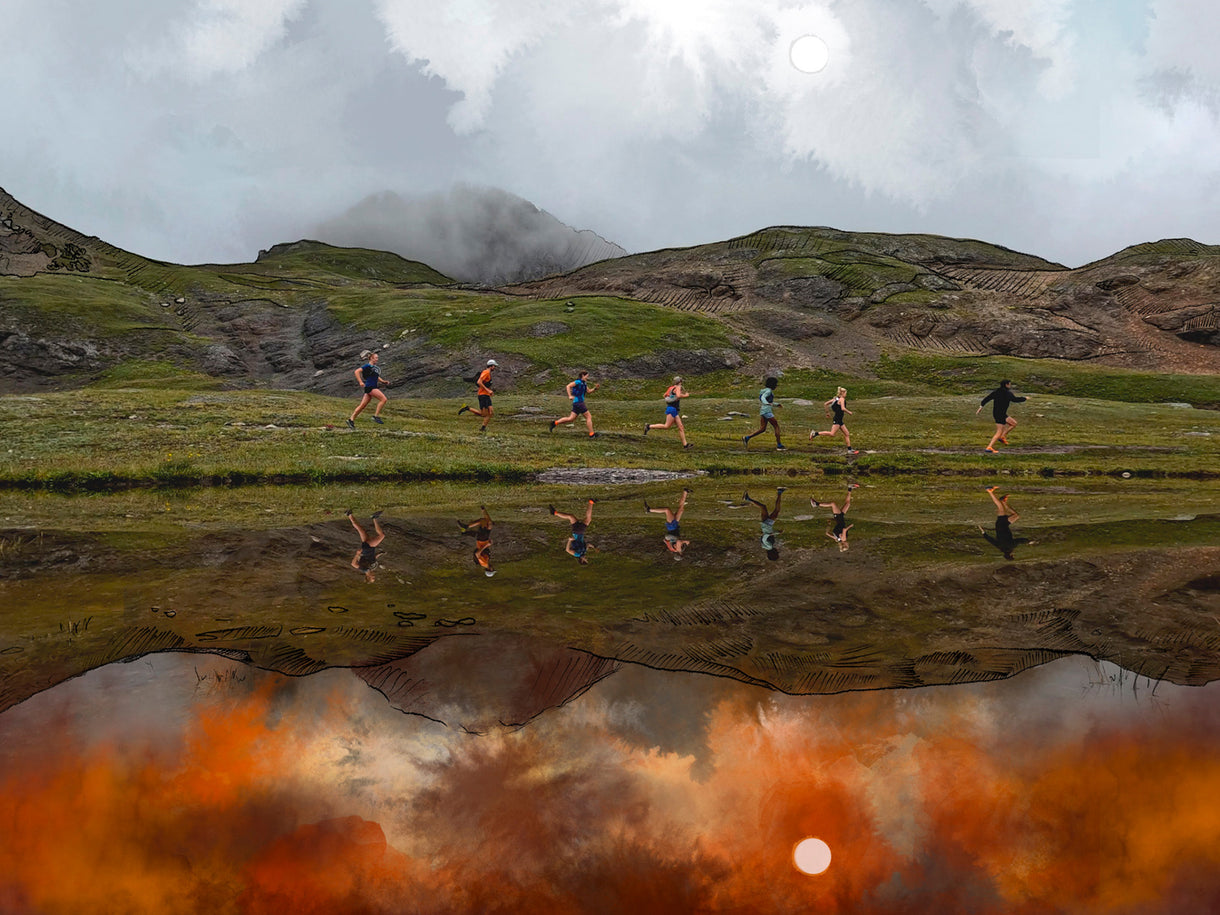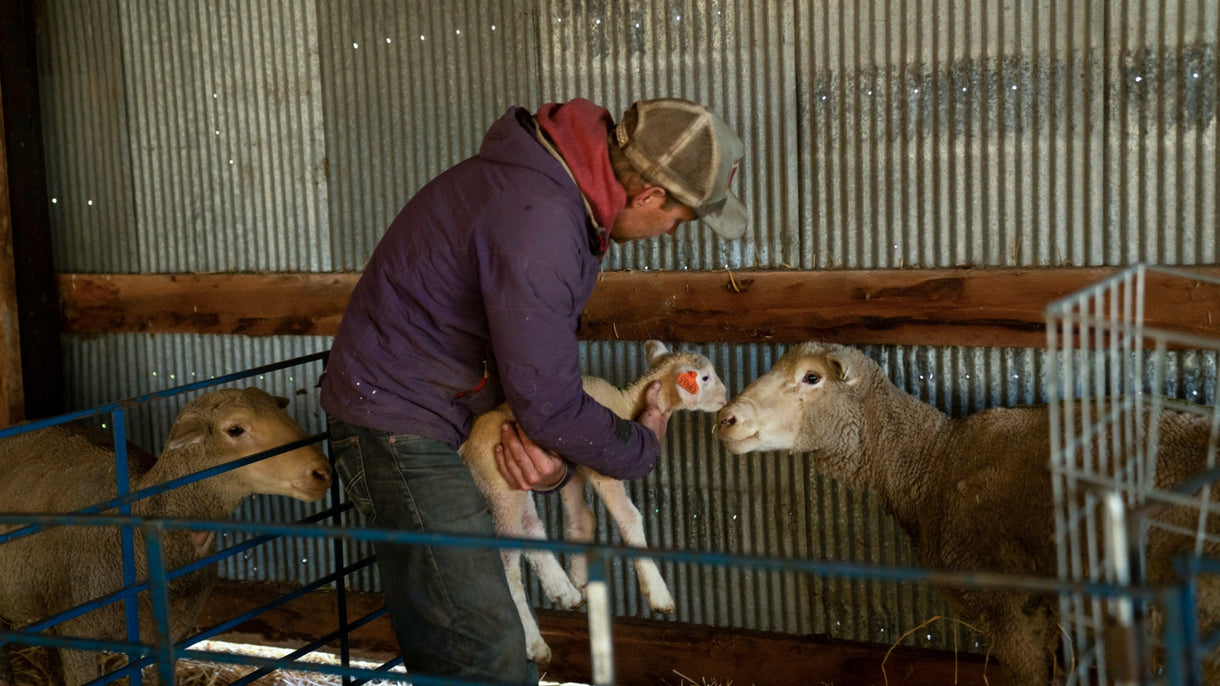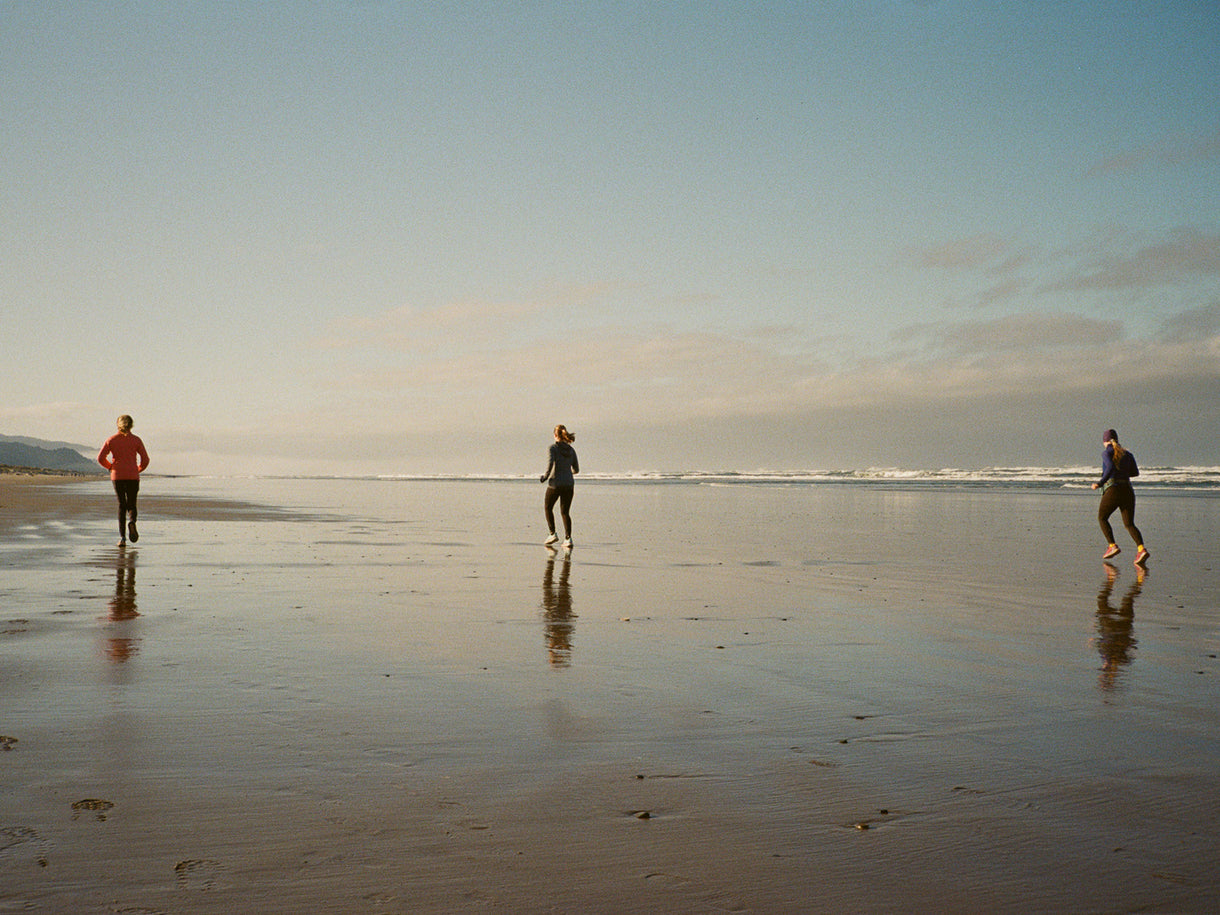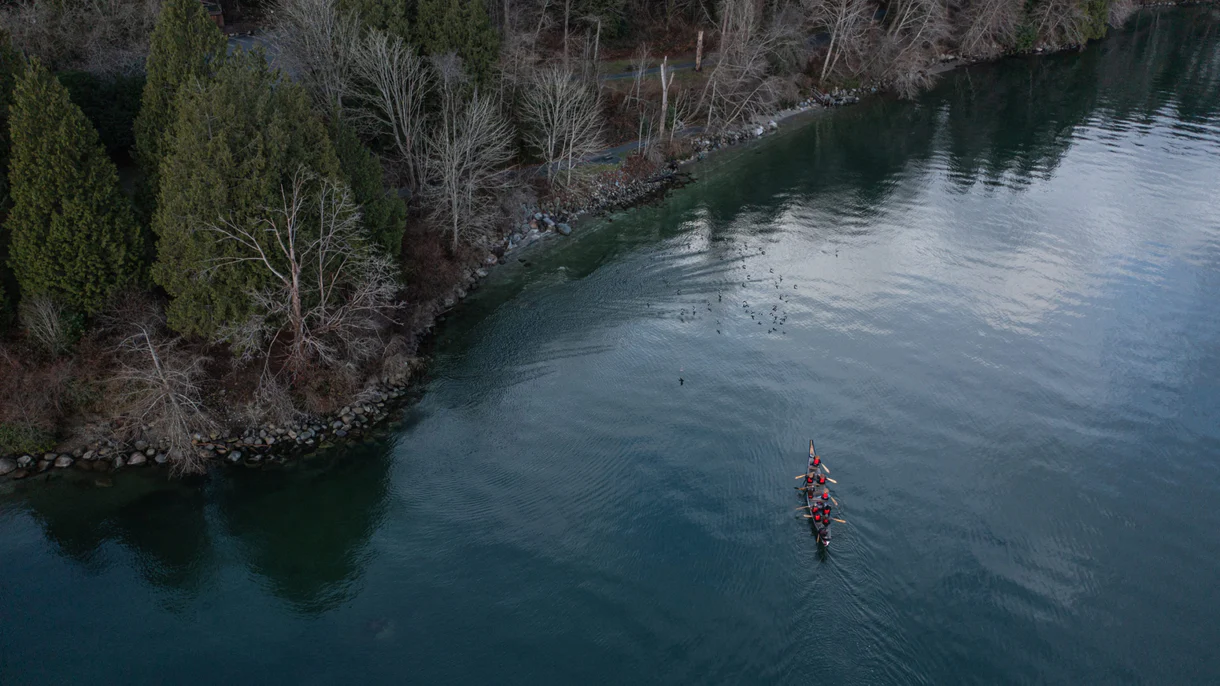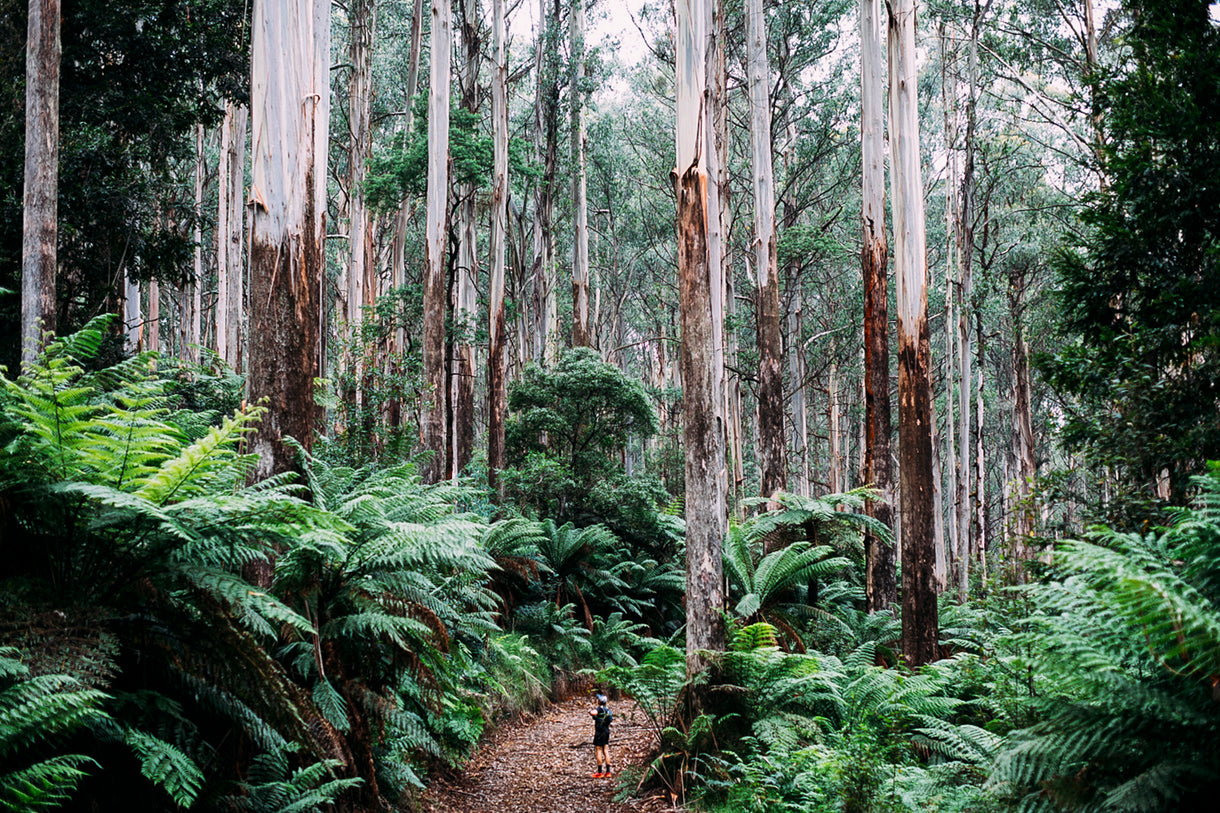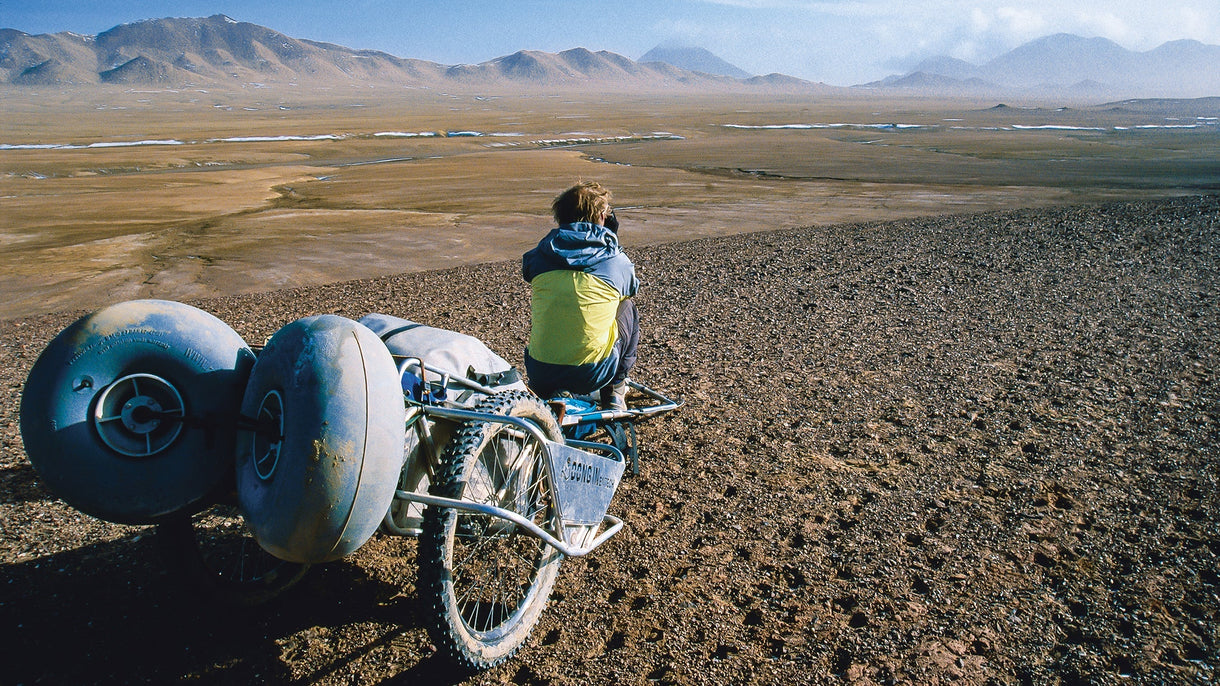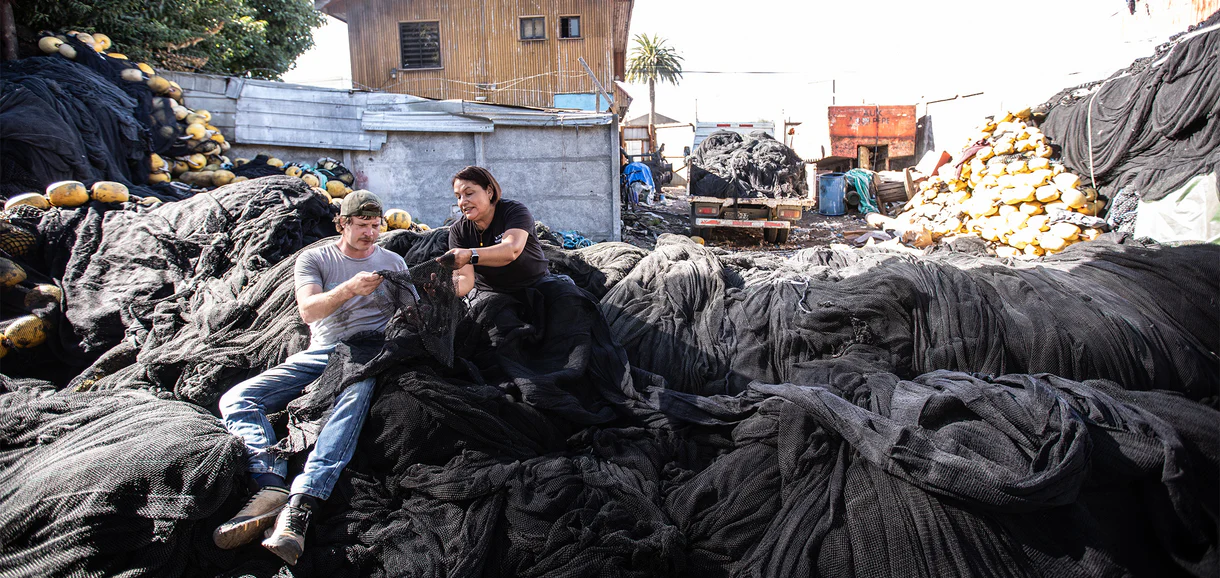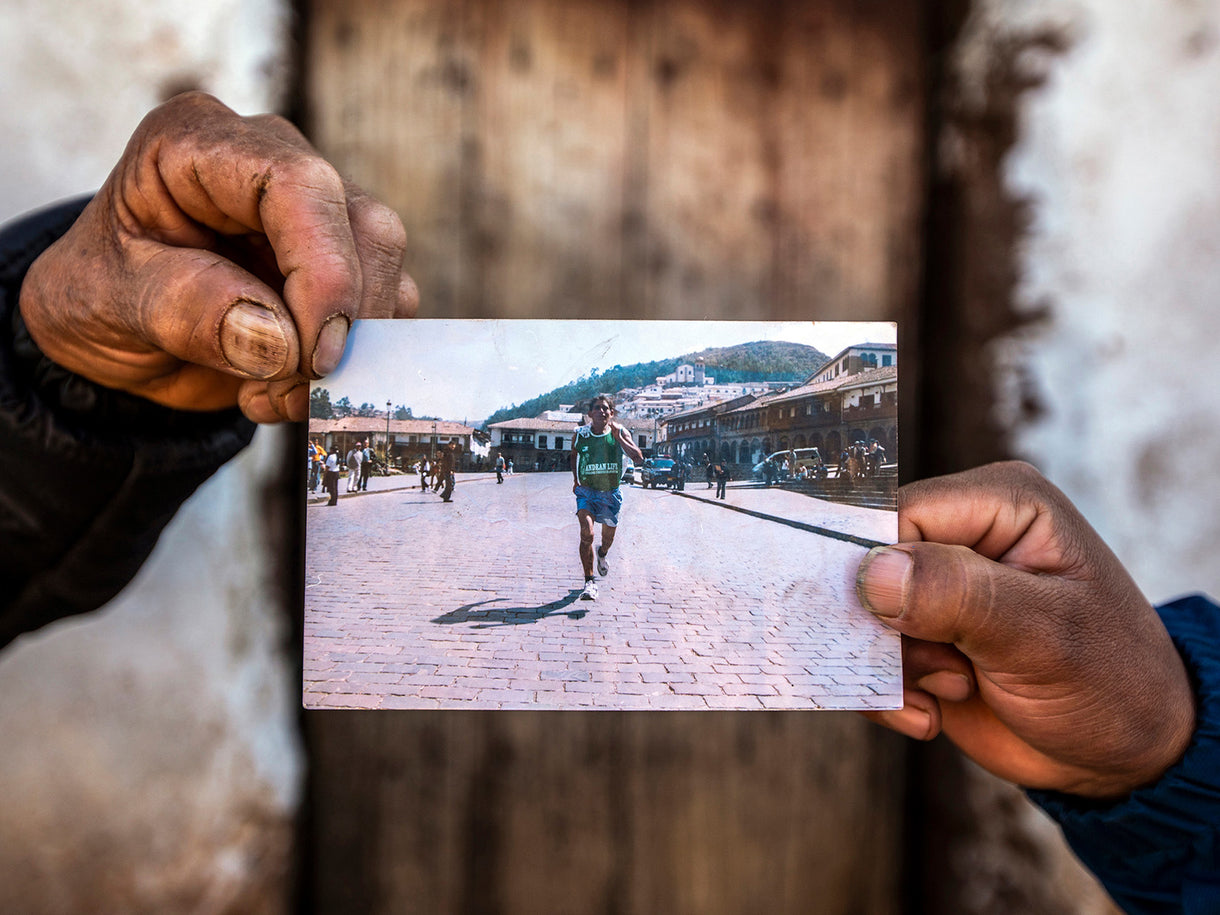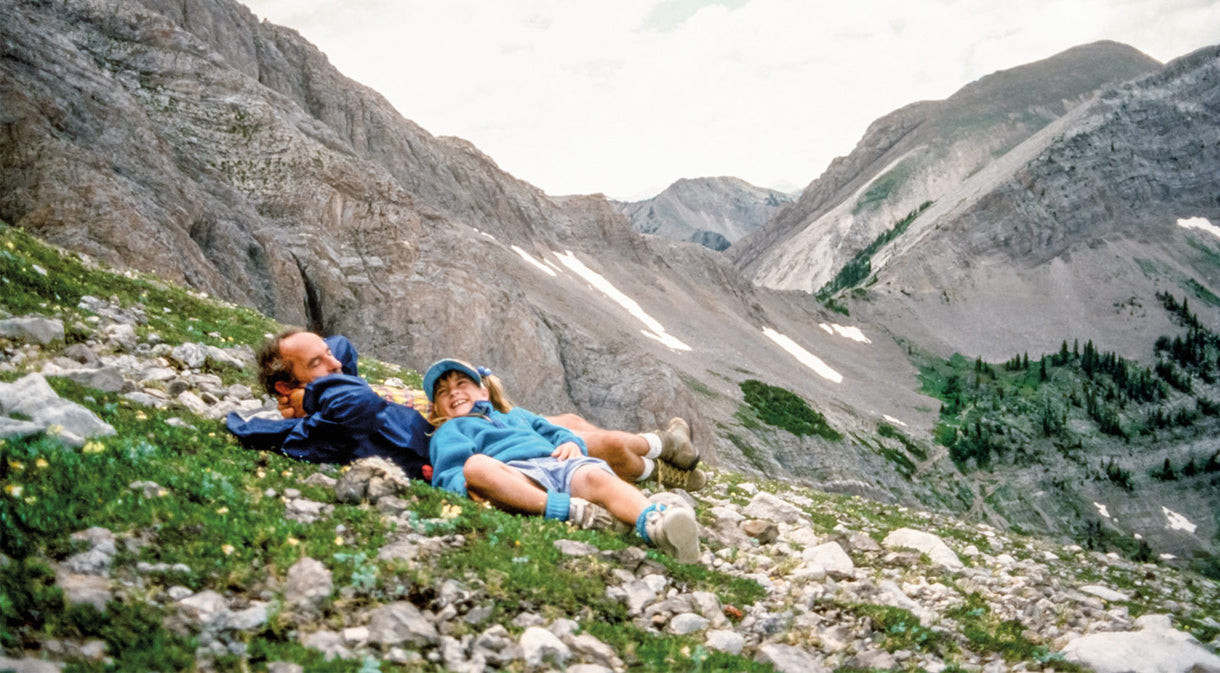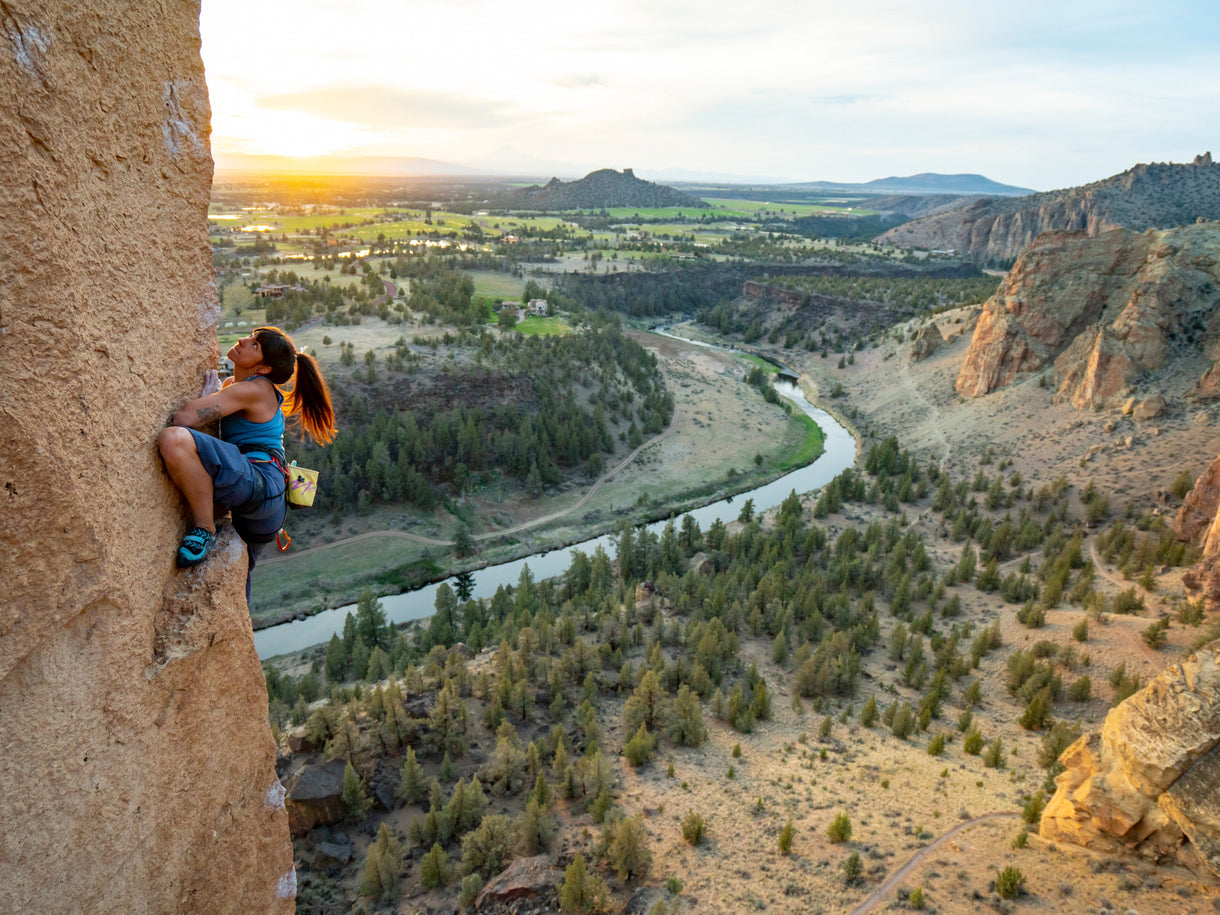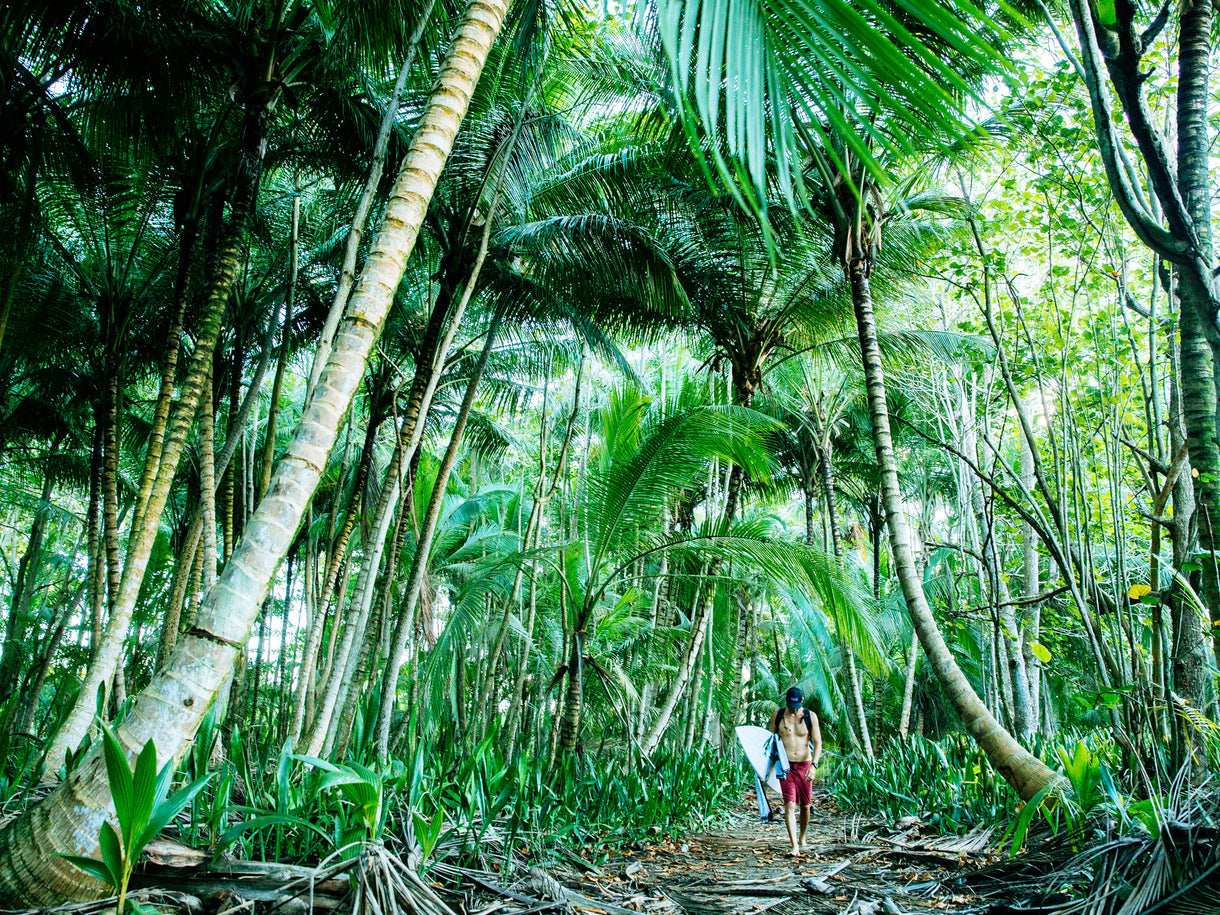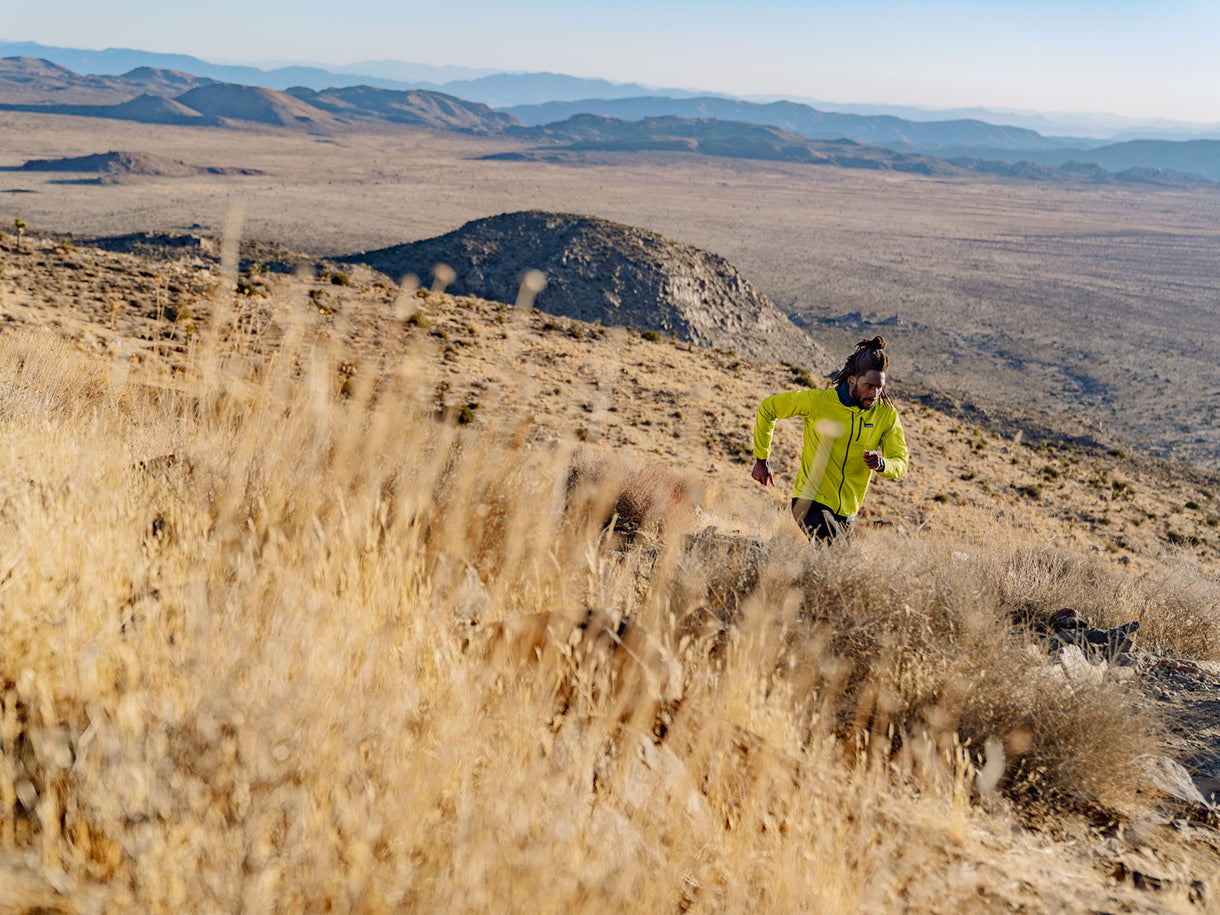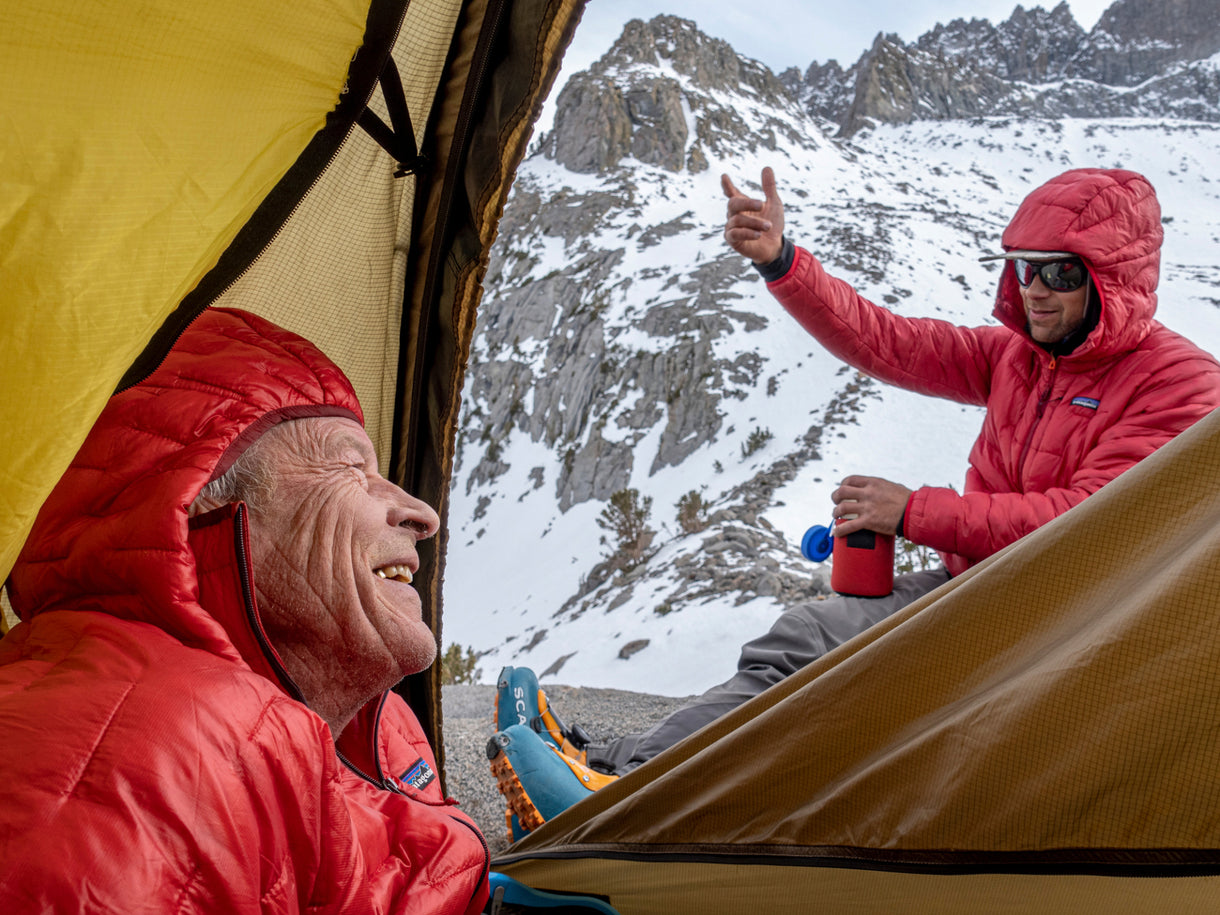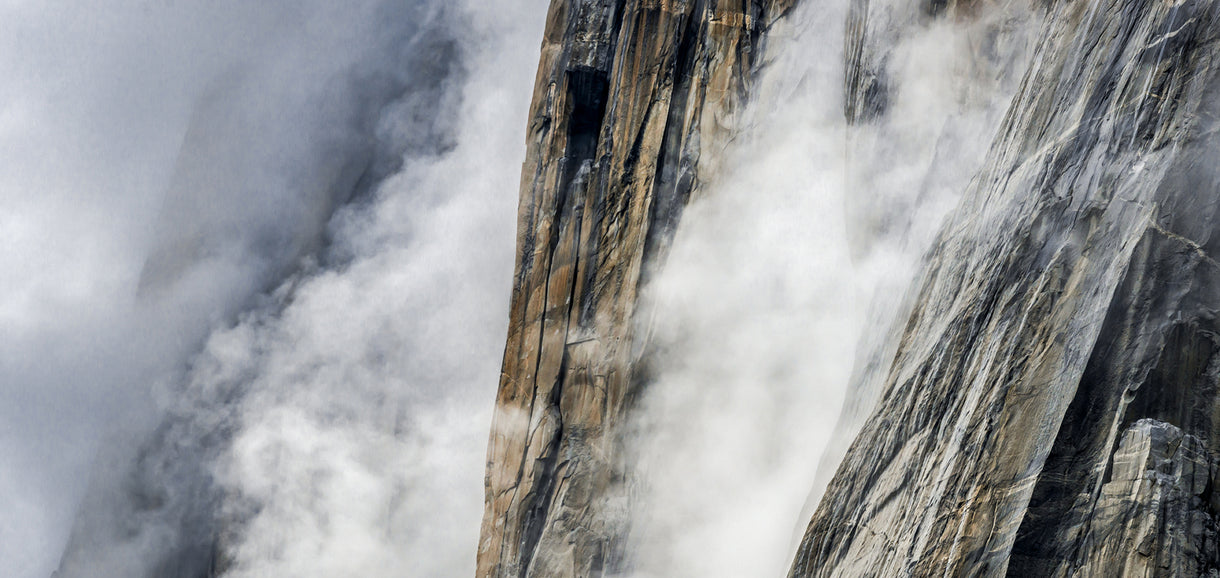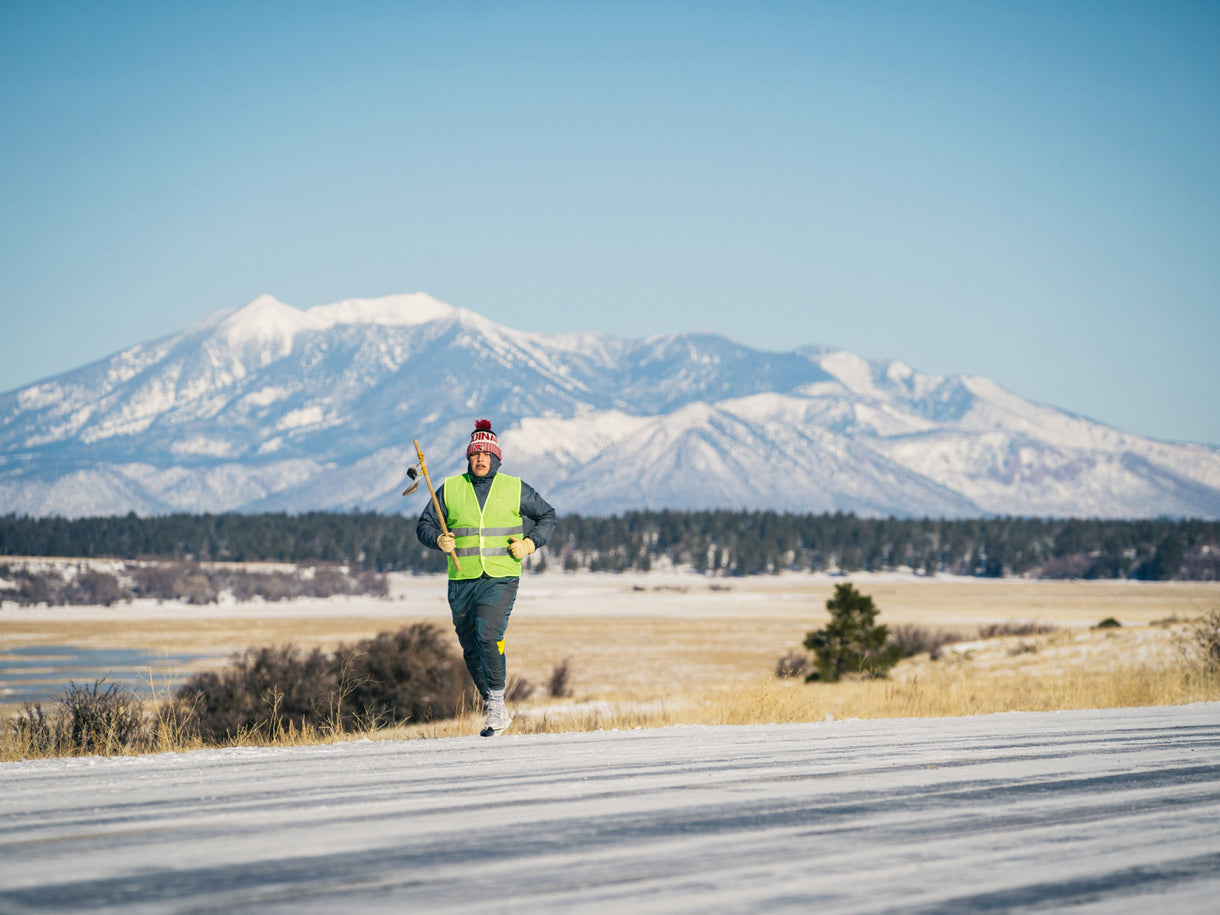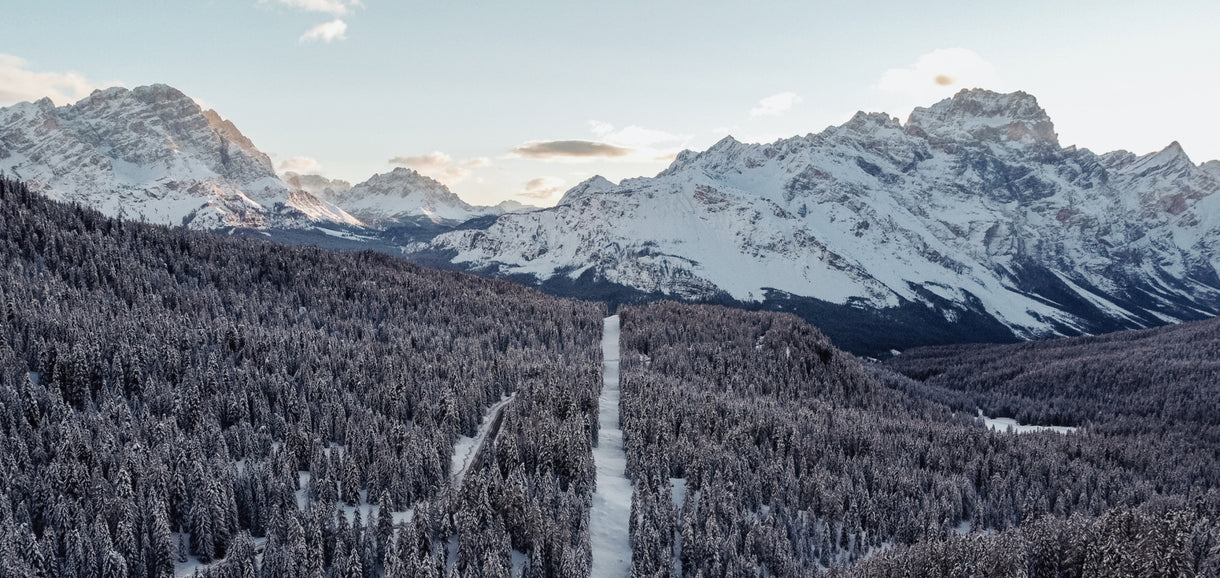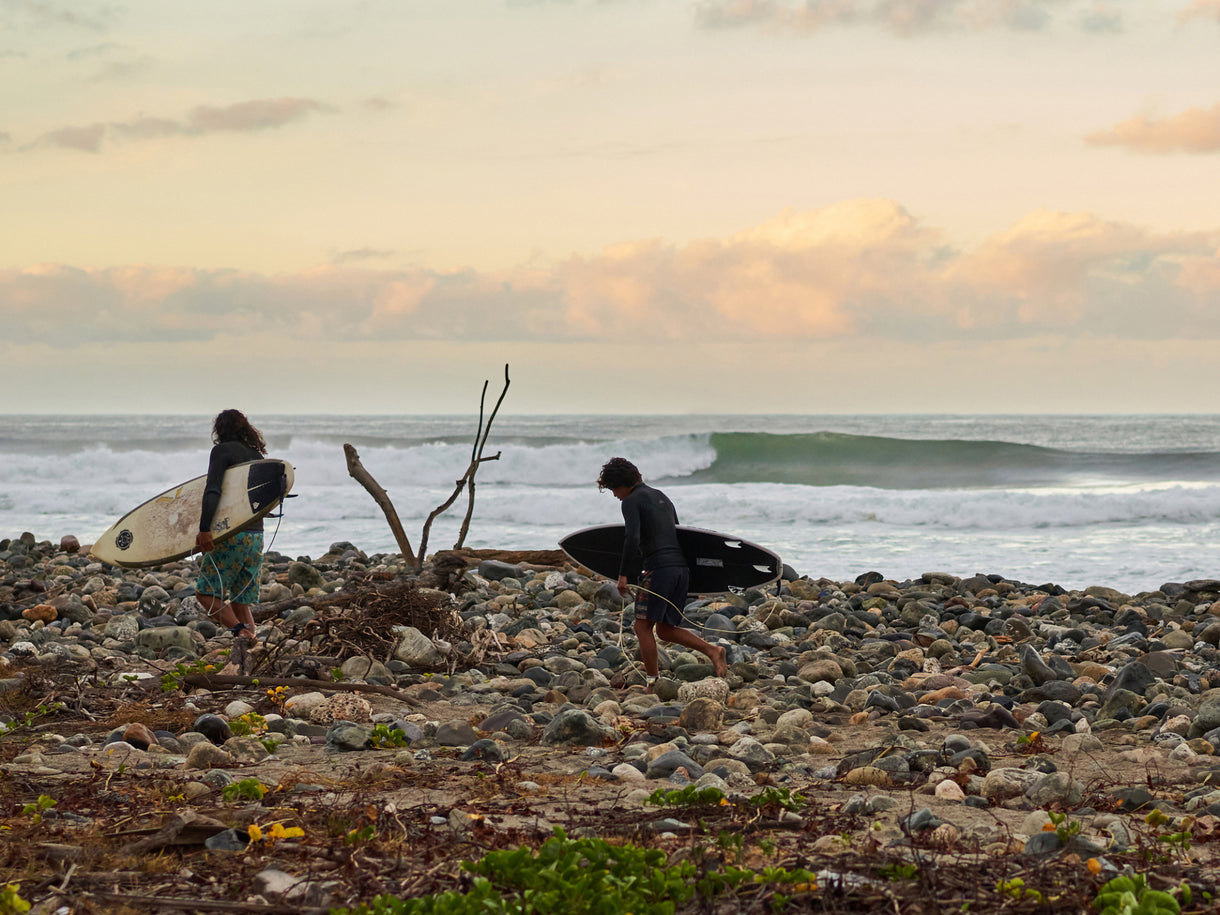Roping up for a global protest.
Humans came down out of the trees. Our earliest known primate ancestors, Purgatorius, were tree-dwelling herbivores who looked like big squirrely rats, or big ratty squirrels. Generation upon generation, millennium upon millennium, as we gradually taught ourselves to eat flesh and inflict violence and think big thoughts, our bodies lengthened and thickened, and as they did, we fell gradually to the earth.
But not all the way. For millions of years, our hominid ancestors—like Lucy, the famed Australopithecus afarensis fossil discovered in Ethiopia, a hirsute, gorilla-faced, 3’7″ humanoid who lived more than three million years ago—lived a life balanced between the land and air. They walked on the forest floor but often clambered up trees, grasping branches and vines with their long-curved toes, to gather food and hide from predators.
We retain this upward yen, though in diluted forms. Even from birth, our hands grasp at invisible branches; one set of studies showed that even infants less than a month old are capable of hanging by their hands from a horizontal bar for at least ten seconds, and, in one case, more than two minutes. Babies learn to climb things (stairs, chairs, adults’ legs, sleeping dogs’ gently heaving backs) before they learn to walk In my various travels, I’ve often noted that if a country has trees, children will climb them. (The only place this appears not to be the case is in cities like New York and London, where the law forbids it, as do neurotic parents. I recently overheard a mother in Rockefeller Park shout at her daughter, who was scaling a tiny Macedonian pin, “You get down out of that tree. You’re going to get all sticky, and I don’t want to hear none of it!”) Despite the inherent dangers, many children regard the branches of a tree as a haven rather than a terror, a realm apart from the terrestrial, adult world. The psychologist J.O. Quantz theorised in 1897 that over the course of “a few thousand generations,” during which humans climbed into trees to escape predators and find sustenance, we evolved to regard trees as “natural protectors.”
Increasingly, the roles are swapped: we are the protectors of the trees (as well as their greatest predators). So it is fitting that, when all other forms of protection fail, climbing a tree remains our last means of saving it from being cut down. The act of “tree-sitting”—camping out high in a treetop as a means of protest—began in New Zealand in 1978. To protect against the logging of the Pureora Forest, home to sacred totara trees and rare kōkako birds, protestors followed the example set by Edward Abbey (whose The Monkey Wrench Gang had appeared just three years earlier) and resorted to disruptive pranks and stunts, but in the gentlest ways they could devise. First they attempted to block the logging road by planting native tree seedlings across it. When that failed, an activist named Stephen King (no relation to the author), who was known as the “barefoot botanist,” free-climbed up into a totora tree and strung up a wooden pallet high in the branches. He and five allies, including his 12-year-old brother, lived in the treetops for about a week. Ingeniously, they revealed their location only to reporters, but remained hidden whenever loggers were nearby, so the loggers never knew which tree they were in, and therefore couldn’t cut down any trees without fear of killing them. A public outcry ensued, and the logging was called off.
 Watching out for old-growth trees in the Cascade Range. Photo: Paul Dix.
Watching out for old-growth trees in the Cascade Range. Photo: Paul Dix.
The same tactic was among those used in the famed logging protest in 1990 in California, known as Redwood Summer, and the Newbury Bypass protest in England in 1996. But tree-sitting did not become widely known in the United States until 1997, when Julia “Butterfly” Hill, at the age of 23, climbed a thousand-year-old redwood in Humboldt County and remained there, braving fierce windstorms, intimidation from loggers, and the coldest winter in California’s history, for 738 days. Again, the story gained media attention—she had a radio-telephone powered by solar panels, she used to field interviews—and eventually that tree was spared, as was a 200-foot buffer zone. Other tree-sitters were not so lucky; I’ve spoken with one climber who was hauled from her tree, placed in handcuffs, and then forced to watch as the tree she had been protecting for months was cut down in front of her eyes. Others were still less fortunate; at least three tree-sitters have died by falling to the ground. What the successful tree-sits, like those of Hill and King, demonstrated was that the act of sitting in a tree is less efficacious than the act of being seen sitting in a tree—it was the media firestorm and ensuing public pressure, not the protest itself, that finally convinced the logging companies to relent.
In 2008, the last protestors voluntarily vacated an arboreal village nicknamed Fern Gully in the California redwoods, which had been occupied by a rotating crew of activists for the past twenty years. It seemed to mark the end of an era. (“Last tree-sitters come down from California redwoods” ran a headline in the Associated Press.) Logging companies had grown wise and, rather than trying to pull tree-sitters down from trees and thereby generating more controversy, they began to quietly wait them out. Meanwhile, industrial logging practices gradually evolved to discourage (though not altogether ban) the logging of old-growth trees. The few extant tree-sits got little media attention. In the face of global and systemic environmental catastrophes like climate change, sitting in a single tree came to seem like a small and futile gesture—why bother saving one ancient tree, or even a whole stand of them, when climate change will one day wipe out entire ecosystems? When they are staged today, the high-profile tree-sits are most often aimed at disrupting the carbon economy by blocking the construction of pipelines and coal mines.
More recently, a new form of protest has sprung up, known as the Big Canopy Campout. One can think of it as Tree-Sitting 2.0. Instead of climbing trees to block clear-cuts, once a year people spend a night in treetops all around the world to raise awareness through social media about the global crisis of deforestation. To many who choose to participate, the appeal is self-evident: it is a gentler, broader, more futuristic, altogether more legal (and thus, far less risky) version of a traditional tree-sit.
I learned about the Big Canopy Campout from a friend’s social media post. The post included dreamy, slightly vertiginous photos of people sleeping in hammocks strung up between the branches of tall trees in exotic locales like Borneo and Tasmania. I was intrigued by their decentralised, soft-path approach. But in order to take part in the Big Canopy Campout, I first needed to get up into the canopy, which meant I needed to learn how to climb trees with a rope—not the hand-over-hand scrambling I did as a kid, but the safer, tech-heavy style favored by modern tree climbers.
I contacted Tim Kovar, whom Outside Magazine once called “the world’s best tree climber.” When I called him up, Kovar told me that this distinction has caught him no end of flak from other tree climbers. There are actual tree climbing competitions to decide such titles—the foremost competition is the International Tree Climbing Championship, which is aimed mainly at arborists—and Kovar has never participated in one. (He even goes so far as to eschew the term “recreational tree climbing,” which plays up the competitive aspect; he prefers to call it “inspirational” climbing.) All the same, few people have climbed as widely, or as high, as Kovar. He has led expeditions in Brazil, Panama, India, Mexico, Malaysia, Costa Rica, Chile, Taiwan, Denmark, Sweden, the UK, Puerto Rico, Canada, Hawai‘i and Japan.
Kovar grew up climbing the trees in his backyard in suburban Nebraska. As an adult, he moved to Atlanta, where, while working as a cook in a Jamaican restaurant, he met Peter “Treeman” Jenkins, an aging hippie who ran a prominent tree-care business. Treeman hired Kovar to work on his crew, where Kovar learned how to climb trees using ropes. It was hard, dangerous work—chainsaws plus ropes plus heights plus big dead trees is not an equation for a cushy work environment—and Kovar gradually became disenchanted. He had begun to believe that trees possess a certain measure of personhood, which made killing them all the more painful. “The straw that broke the camel’s back,” Kovar says, came one day when he was watching Treeman cut down a 100-year-old tulip poplar tree in someone’s backyard so they could install a swimming pool. As Treeman was sawing into the tree, he hit a pocket of fluids hidden inside the trunk. “When he hit that water pocket, and all that water came rushing out where that chainsaw blade cut, I literally saw blood,” Kovar says. “It was at that moment where I said, ‘This is it, I have got to stop cutting down trees.’”
Fortunately, on the weekends, Treeman also taught recreational tree-climbing, a sport he had invented by adapting rock climbing techniques. He enlisted Kovar’s help to teach his course. On Kovar’s first day, he watched as a pair of old ladies slinked up the rope into the branches of an oak tree with child-like glee. When they came back down, they told Kovar that they felt a special connection to the tree they had just climbed. Over the months, he saw this happen again and again. People returned to earth with a realisation that seems obvious, but isn’t: that trees are truly alive, and, moreover, that they help keep us alive. The thought of clearcutting a forest of those trees suddenly seemed acutely grotesque.
Ten years later—having grown increasingly distressed by the ravages of climate change and destructive logging, and his own nagging feeling that he wasn’t doing enough to avert them— Kovar moved out to Portland, Oregon, and opened Tree Climbing Planet, the first recreational tree-climbing school west of the Rockies. Peter “Treeman” Jenkins’s school, the first in the world, had already spawned a few offshoots, mostly in the southeast, where there are an abundance of old hardwood trees with broad crowns, ideal for beginners; Kovar distinguished himself by focusing more on the tall western conifers of the Pacific Northwest. He has since trained 15,000 tree climbers—canopy researchers, photographers, and no-reason-in-particular oddballs like me.
 Tim Kovar guiding a new tree climber in Grandfather Tree. Santa Cruz Mountains. 2019. Photo: Steve Lillegren.
Tim Kovar guiding a new tree climber in Grandfather Tree. Santa Cruz Mountains. 2019. Photo: Steve Lillegren.
One hot morning in July, amid the dusty old-photographic light of wildfire haze, I arrived at Tim Kovar’s tree-climbing school. He lives in a 110-year-old stone building overlooking a vast tract of land—dry yellow fields speckled with flocks of white sheep, a green pond, and beyond it, an oak savanna. He greeted me in the driveway as I arrived. He was dressed in a black T-shirt, and his thick forearms were upholstered with tattoos. He had short greying hair, a rugged face, blue eyes, a deep voice, and a nerdy, meticulous brain. Beside him were the other two students in my course: Steen, a middle-aged tree grower from Humboldt with the deep tan of a lifelong surfer, and Joshua, a slim, smiley guy with a shaved head, a chin-beard, and (I later learned) a tattoo across his back of a skeleton waving a Confederate flag, which had been covered up with the snarling blue face of a Tibetan deity. Both Joshua and Steen, I learned, were Navy vets, and both had converted to pacifism after trying hallucinogens. Steen was taking the course because he wanted to learn how to collect redwood cones and, if need be, stage a treetop protest. Joshua, who was studying to be a clinical psychologist, hoped to use tree-climbing to assist people suffering from PTSD.
Kovar welcomed us into the living room of his farmhouse, where the walls were hung with souvenirs from his far-flung travels—masks, machetes and a strange, woven artifact from the Amazon called an “ant glove,” which was designed to be filled with bullet ants and slipped over the hand of some brave, unfortunate individual as part of an adolescent initiation ritual. We signed release forms, gathered up our gear, then drove off in Kovar’s open-air jeep down a rutted dirt path across his property to a grove of trees on a hill. At the far end of the grove, wedged among the branches of an oak tree, was an enormous treehouse, two-stories high, complete with glass windows and a back porch. To reach the treehouse you had to climb a ladder attached to a nearby tree and then wobble across a rope bridge. “Coooool,” we full-grown men exclaimed, more or less in unison, when we saw it. Kovar called it the “Owl House.” He informed me that I could sleep up there for the next three nights rather than sleeping in my tent, if I liked. (I did.)
That day’s first lesson was on how to toss “throw lines” (long stretches of cord attached to a weight, which resembled a small hacky sack filled with lead) into a tall oak tree. Kovar pointed out the branch with a laser pointer, and we tried to hit it, swinging the weight between our legs. Next, Kovar set some ropes in the tree and taught us how to ascend them, using two caving ascenders. Easy enough, I thought—except, I discovered, for the bobbing, and the spinning, and the mass of gear hanging from my saddle (as a tree-climbing harness is called), which clinked and swayed with each movement, weighing me down. After about ten repetitions, my elbows and abs began to ache. Descending, by comparison, was a pure, liquid joy.
Once we got the hang of it, Kovar instructed us to climb up to the lowest branch, about fifteen feet up, and stand on it. As I struggled to find a rhythm, I looked over: Joshua, a rock climber and slack liner, made it look easy; Steen was a bit clumsier; Kovar was wing-footed. When all had reached the first branch, we stood teetering on it. I paused to notice if I felt different than I had down on the ground. I was indeed more watchful and aware. Most importantly, I suddenly realised, in a pre-conscious, bodily way, that the tree was holding my life in its hands. Though it sounds embarrassingly earnest and misty-eyed, it’s true: I felt … thankful.
The Big Canopy Campout was never meant to be a protest. It was created to serve as a kind of international tree climbing conference, but rather than burning carbon to gather in a conference room, it would be held on social media. Eventually, it evolved a charitable aim, to raise money to protect a threatened patch of old-growth forest, the location of which changes annually; that year’s target was the Sierra Gorda cloud-forest in Mexico. As global events go, it remains relatively small—in its third year, about 1,000 climbers registered.
It was founded in 2017 by three tree climbers named Vicki Tough, Ollie Laker and Dr. John Pike. This was the second year it had been held. Afterward, I called up Vicki Tough (who is a professional arborist) and asked her how it went. She told me she spent her Campout in Borneo. In the days leading up to the event, she got to climb tropical trees over 200 feet tall, as troupes of macaques and red leaf monkeys gamboled through the branches. One tree held an orangutan nest, and in it slept a baby orangutan. (“He was incredibly curious,” Tough recalled. “He would run out to the top of a very small branch, be very pleased with himself, and then realise he couldn’t get back and start screaming for mum.”) However, on the big night, a torrential rain forced her to sleep on the ground.
I was more fortunate. I spent my Campout in a patch of forest owned by Cornell University in Ithaca, New York, a shady Eastern woodland, full of tall maples and hickories. The event was hosted by Dr. Mark Holton, who runs the outdoor education program for the university. Holton is grey-bearded and grey-ponytailed, with a goofy smile. He can often be seen climbing things-not-designated-as-climbing-objects—brick walls, public sculptures—around campus.
During his undergraduate studies at University of New Hampshire, Holton decided he didn’t want to pay rent, so he slipped off into the college woods and set up a hammock. While studying for his PhD in chemistry at Cornell, he went a step further and constructed a treehouse on a sheep ranch belonging to a friend. It took two days to build and cost 125 dollars. (“I didn’t know how to build anything, so the roof periodically blew off,” he recalled.) It eventually evolved into complex, bi-level construction, complete with a Swiss Family Robinson-style counterweighted elevator. On cold nights, bundled in down comforters, he would occasionally shout the word “cozy!” into the night—what he described as “an exultation of cosiness.” He ultimately stayed in that unheated treehouse for three years (including winters).
“I was living in a tree more or less at the same time Julia Butterfly was up there, who is probably the most famous tree-sitter,” Holton recounted. “And so every time someone heard about my situation, they wanted to know what cause I was supporting or what I was defending. And I was like, ‘Actually, I just live there!’ And they’d say, ‘Yes, but what is the big inspirational thing?’ And I’d say, ‘Well, the rent is zero. That’s pretty inspirational.’”
When I arrived at the campsite, Holton pointed me to a pair of basic treetop platforms, which resembled balconies. (These are, incidentally, more or less the same kinds of platforms that tree-sitters use.) He invited me to climb up to one of the platforms and check it out, so I clipped into the rope and inch-wormed up. On top, I felt that woozy edge-of-canyon vertigo; I moved with careful steps. I was joined by Kate O’Connor, a trim and sharp-featured young woman in black activewear, with a sunburst of fine lines radiating happily from the corners of her eyes. An environmental biologist, she had learned to climb so that she could study how to protect the local hemlocks from an invasive insect from Japan known as the hemlock woolly adelgid.
I asked her about the feeling of being up there. “It’s similar to rock climbing, in that you have to be focused, but unlike a rock, you’re climbing a living being,” she said. “It’s less of an isolating feeling; it’s more holistic. You kind of feel that you’re more a part of things. The tree is kind of inviting, it’s like a friend to discover. That sounds corny, but … ” She shrugged.
O’Connor and I rappelled down and joined a couple Cornell students on the ground, who had formed a circle around a pile of snacks. Holton arrived with three of his four children, who went running through the woods, howling like wolves. The two middle siblings, a boy of 9 nicknamed Smudgie and girl of 6 nicknamed Scuppers, ran over, filched two bags of gummy candies from us, then went running off again. Holton sighed. Both were barefoot; neither had ever had a haircut in their lives. “They are little beasts,” he said, not without a hint of pride.
Naturally, Holton’s children are also adept tree climbers. I asked them what they liked most about climbing trees. “What I like about tree climbing,” replied Scuppers, “is that while I am up there, I am special. I’m the sneaky one hiding up in the tree and no one even knows I’m there.” Smudgie said, “I like swinging around like a monkey. And the views are great!”
Holton, his kids, a group of his students and I sat around for a few hours, cross-legged on the ground in a circle. It was a warm, crickety night. The sun fell; the mosquitoes rose. Holton regaled us with his adventures: he had climbed baobab trees in Madagascar, had led at-risk teenagers on backcountry expeditions, and had worked on an ice-core study in Greenland.
Around ten o’clock, we climbed up to the treetops and bedded down for the night. Some slept in hammocks, some in a tensile tent, and some (including me) slept on the wooden platform. As I lay in my sleeping bag, I checked my phone. Photos and videos of people in their arboreal hideaways began trickling in: first from Tasmania, Borneo, Sweden, Switzerland, the Isle of Wight, Mexico, and Portland, Oregon. Many more people—like me—were tucked away in trees in places less spectacular (backyard gardens, university campuses), but, for reasons known only to them, opted not to post photos of their climb. (The people in my Campout were having such a good time talking, we simply forgot. Holton, who was supposed to be in charge, doesn’t even own a smartphone.) All the same, I like to believe our presence was felt. As with any protest or demonstration, the wave of collective action, amplified by social media, builds upon itself. When you’re alone, climbing a tree can seem like a somewhat whimsical, even juvenile, act. En masse (or rather, en nuage), it felt like a global movement, a bright tremor of protest running around the darkening earth.
At the same time, I couldn’t help but wonder whether this tactic was as effective at stopping the destruction of forests as an old-fashioned tree-sit. The impact may be greater, but it is distant.
This year, the money raised by the event will benefit the Bob Brown Foundation, which protects old-growth forests in Australia. It will take place on October 17th. Amid the ongoing global pandemic—when huge numbers of people have canceled their vacations and may be itching for a hyperlocal adventure—a record number of protesters are expected to participate. I plan to be one of them. Snugged up in a treeboat in the forest behind my house in British Columbia, lost in treetime, I will be taking photos, sending missives, dozing, musing on our shared arboreality, and hoping all of us, together, can cause a ripple on the surface of this still-largely forested planet.
Find out more about the Big Canopy Campout October 17 here.
Banner image: Dr. Lisa Searle takes part in a treetop protest organised by the Bob Brown Foundation in the Frankland River area of the Tarkine, Tasmania. Photo: Krystle Wright.
____________________________________________________________________
Author Profile


